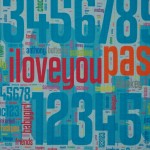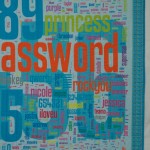I had never seen a bass flute before I joined the Pittsburgh Flute Academy flute choir about 5 years ago. The director, Wendy Webb Kumer, loves low flutes and wants every member to have the opportunity to play them, so she makes sure that everyone gets assigned a low flute part every now and then. The flute choir owns several alto and bass flutes, along with an enormous contrabass flute, so there are low flutes available for those who don’t own a low flute to play. The bass flute was a little intimidating at first. It was big and heavy! And the first time I tried it I had only recently picked up my C flute again after a two-decade hiatus. But as my C flute skills improved, I grew excited about trying the low flutes again. After everyone else in my house (husband and 3 kids) started playing electric bass guitar, I decided I needed a bass flute.
The bass flute is an octave lower than the C flute, but the music is generally printed an octave higher than it sounds so you can read it on a treble clef. You play a bass flute exactly the same way you play a C flute, although the embouchure (mouth) position takes some practice and getting used to. And bass flutes are heavy so can be tiring to hold up for long periods of time.
Flute playing is a hobby for me, and one I don’t actually have much time for with my real job as a computer science professor. So shopping for a bass flute was also something I didn’t have much time for either. But several months into the pandemic, with no vacation travel plans for the foreseeable future, I took some time out to shop online for a bass flute.
Shopping for a bass flute online is actually fairly difficult because there is very little information available about the different bass flute models and almost no reviews. I have shopped for cameras and lenses online and there is a ton of information, with lots of reviews and detailed comparisons between models. People say you really need to just try playing flutes yourself and even try the specific instance of the model you want to buy as they aren’t all identical. Nonetheless, reviews and comparisons would be helpful for narrowing down the options and deciding which flutes to trial. Thus, I am going to go into some detail about the differences I observed in the flutes I trialed and my experience playing them (as a non-professional flutist and very amateur bass flutist). Obviously, your mileage may vary.
There are not a huge number of bass flutes to choose from, and especially if you want to stick to a budget, there are only so many types of bass flutes to try. Nonetheless, I did not get to try all the options in my price range. I set my budget at $4,000. I ruled out the plastic flutes (which some swear by, but mostly due to their lighter weight). And I ruled out those that didn’t have any trill keys (a flute without trill keys seems somewhat limiting). Then I asked around for recommendations. A member of my flute choir raved about his Pearl bass (check out this cool video featuring a Pearl bass). My flute teacher Sarah Steranka loves her Gemeinhardt bass. Joan Sparks at Flute Pro Shop told me that her store was having bass flutes made just for them, including horizontal and vertical bass flutes. I found a video about Trevor James bass flutes. I ruled out the Jupiter bass flute (despite a nice video) because the current model doesn’t have trill keys. I thought about trying the Di Zhao bass, since my C flute is a Di Zhao, but a couple of people told me they didn’t like it as much as the Pearl. The Di Zhao vertical bass is intriguing as well, but exceeded my budget.
I ordered C-foot Gemeinhardt and Trevor James bass flutes to trial from Flute Specialists. Flute Pro Shop sent me a B-foot Pearl, a C-foot Flute Pro Shop, and a B-foot vertical Flute Pro Shop bass flute. Over the course of a week they all arrived at my house, which was very exciting! I played them all, discussed with the two flute stores, and even had a socially distanced meetup with Sarah and Wendy before deciding which one to purchase.
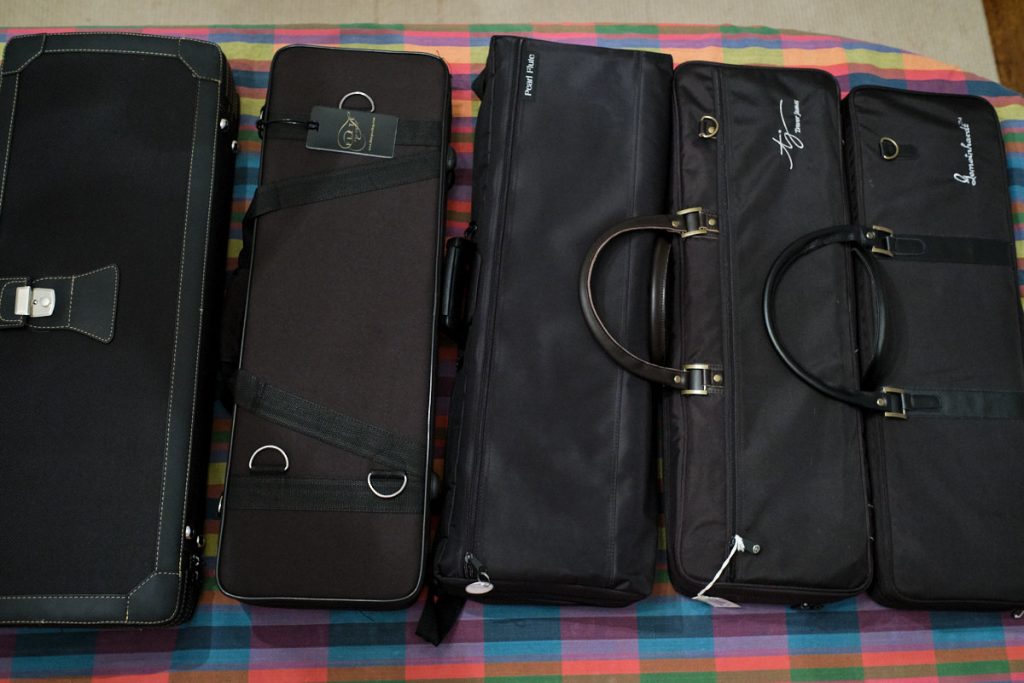
I’ll start with the Gemeinhardt ($3,199) and Trevor James ($3,895) bass flutes. These two flutes were amazingly similar, except for the price tag. As you can see in the photo above, they both come with the same kind of case cover — except the Trevor James has a brown leather handle, a pocket, and nice fleecy lining.
When the Trevor James arrived I initially had some trouble with it. I noticed right away that I could not play a B flat (with either fingering). I called Flute Specialists and in about 5 minutes on the phone they walked me through diagnosing the problem (a spring that had slipped out of place) and fixing it myself.
The photos below show the flutes themselves (click on a photo to enlarge). They look really similar, except the Trevor James has really pretty mother-of-pearl inlaid keys. They both have the same construction and similar shapes, sizes, and positions of most keys. They both have B flat rollers and shaped wooden hand crutches. The most important differences I found are the shape of the left first-finger key and the shape of the trill keys. I liked the Trevor James oval shaped first-finger key which is less of a stretch to reach. However, the Trevor James trill keys are small and pointy, and harder to hit than the wider and rounder trill keys on the Gemeinhardt. The shape of the head joint, lip plate and embouchure hole are very similar, and the feel and sound are also very similar. I found them both fairly easy and comfortable to play in all octaves, despite my lack of bass flute experience. With only minor fiddling with the head joint positioning I was able to quickly get a decent sound on both instruments. The middle and low octave of both have a nice full resonant sound, and I found all octaves pretty responsive and I was able to maintain fairly consistent intonation. On both flutes I found the upper octave responsive, but the sound was thinner. While the Trevor James is pretty and I wish the Gemeinhardt case was fuzzy and had an exterior pocket, these differences were not enough to make me want to pay $700 more for the Trevor James.
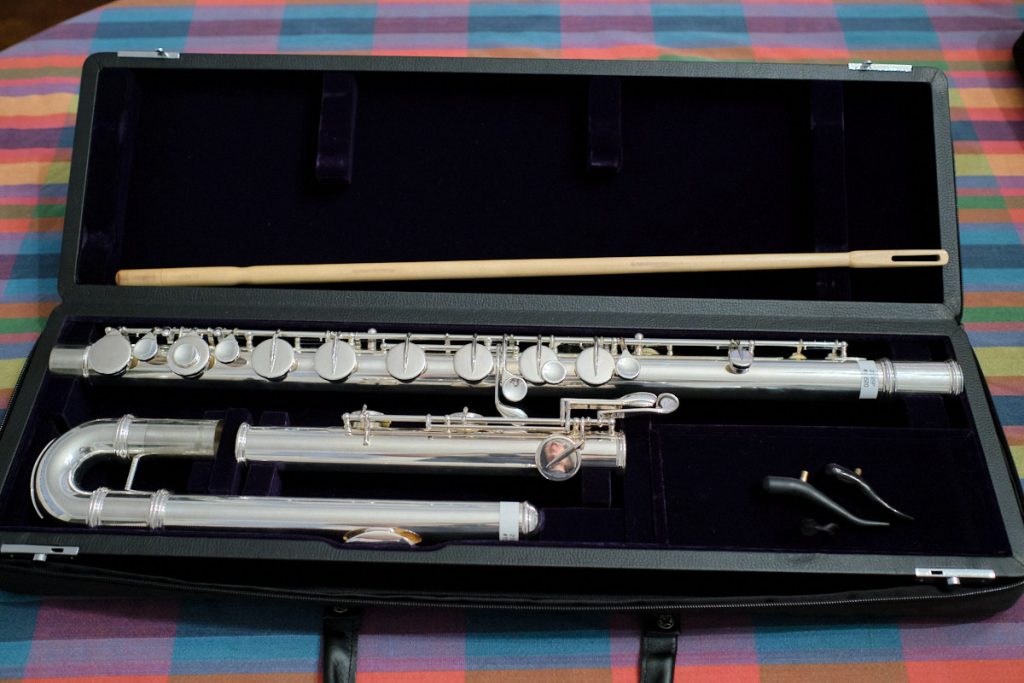
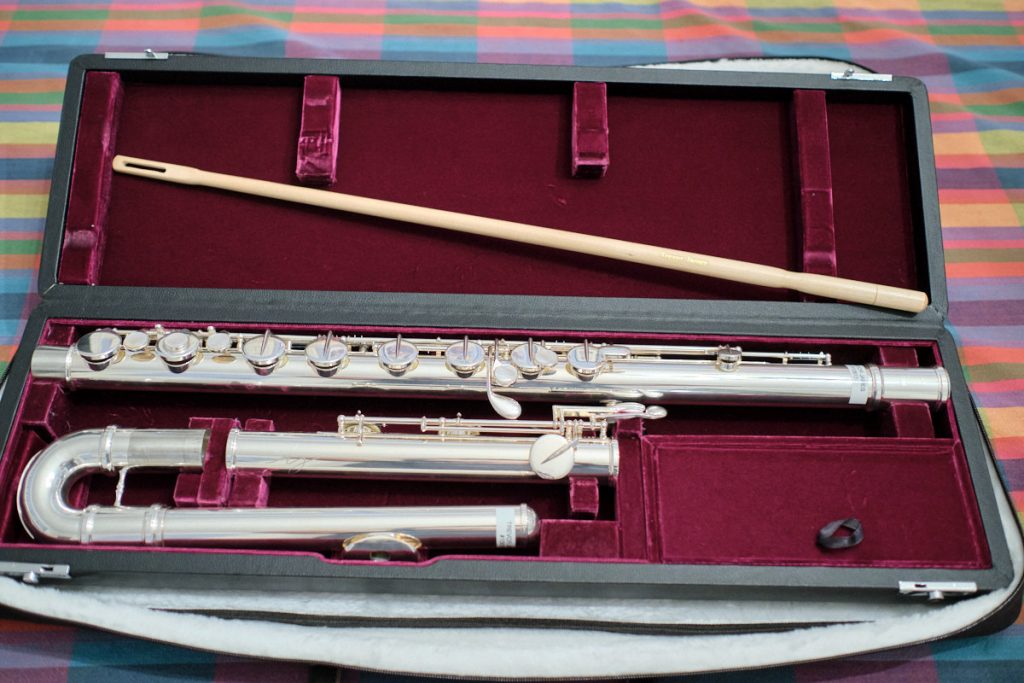
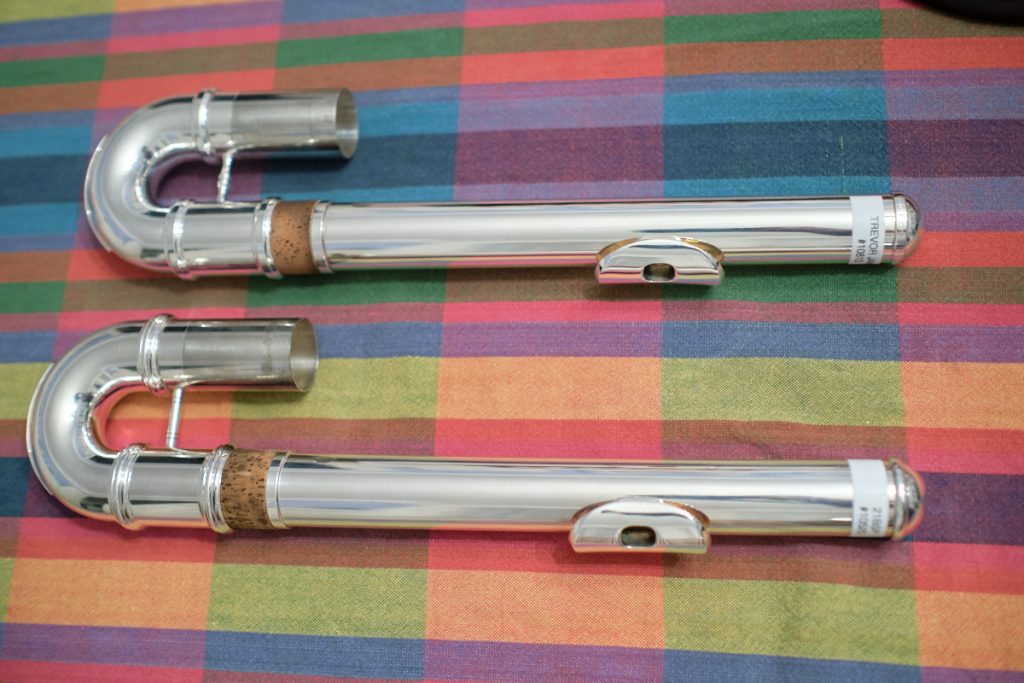
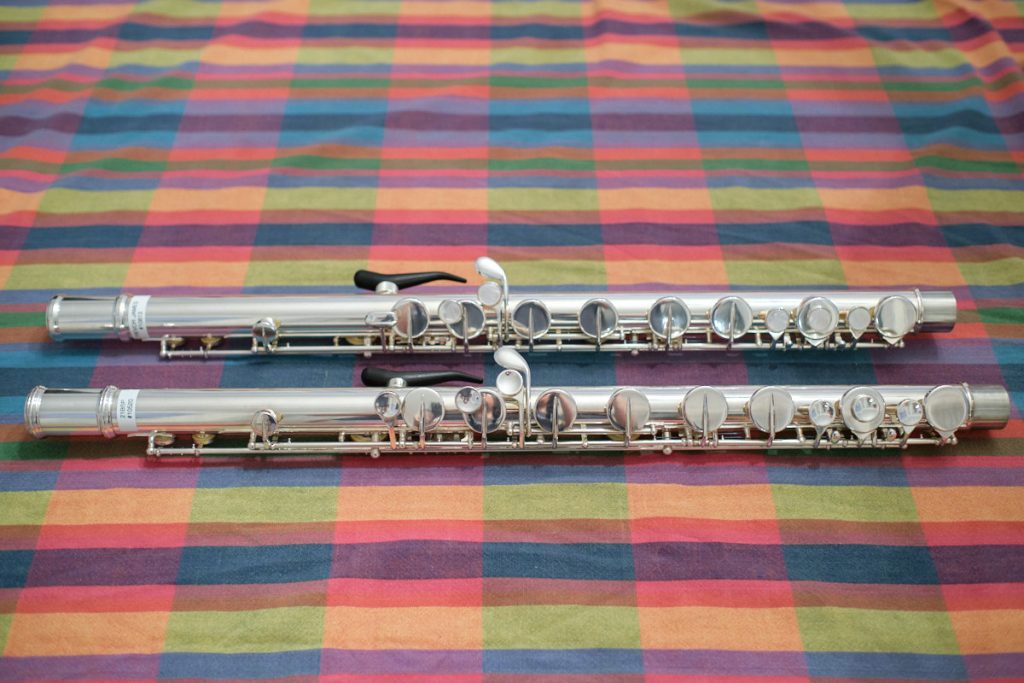
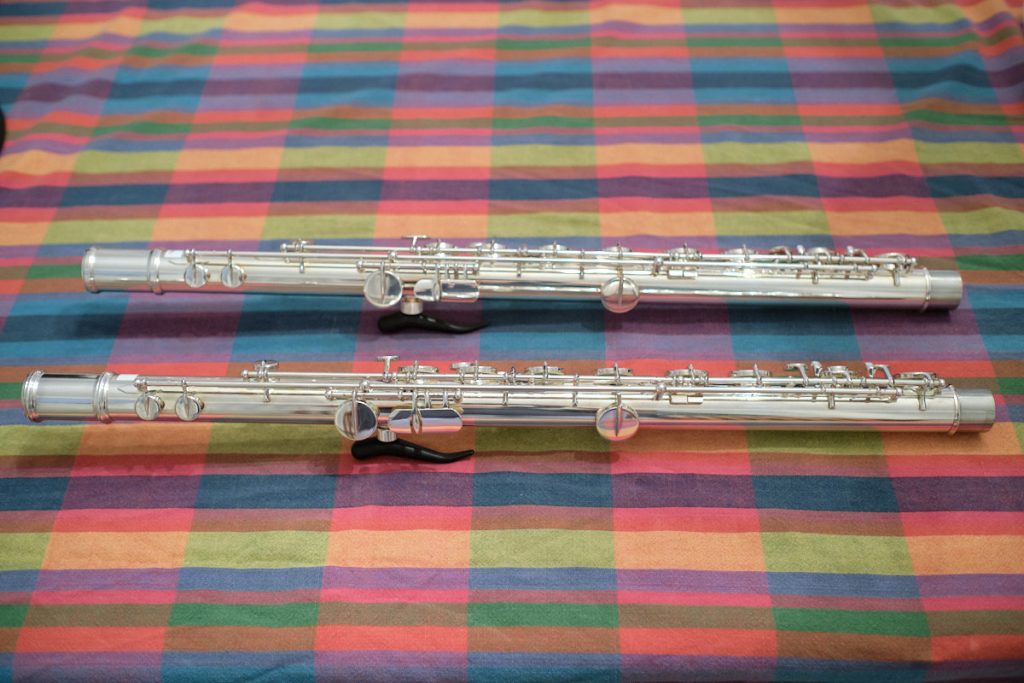
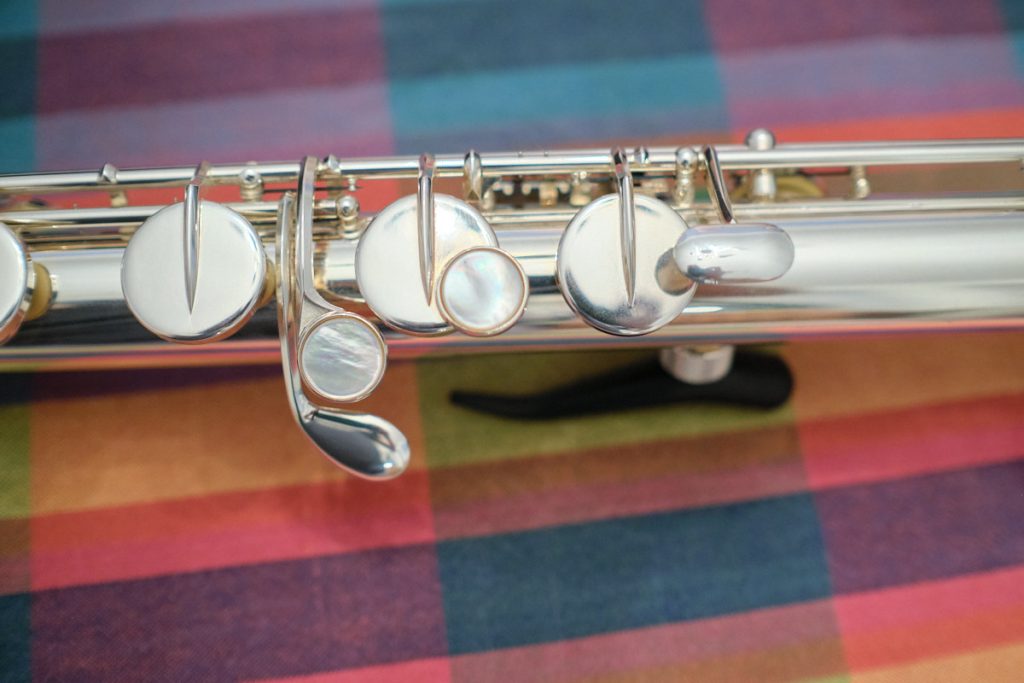

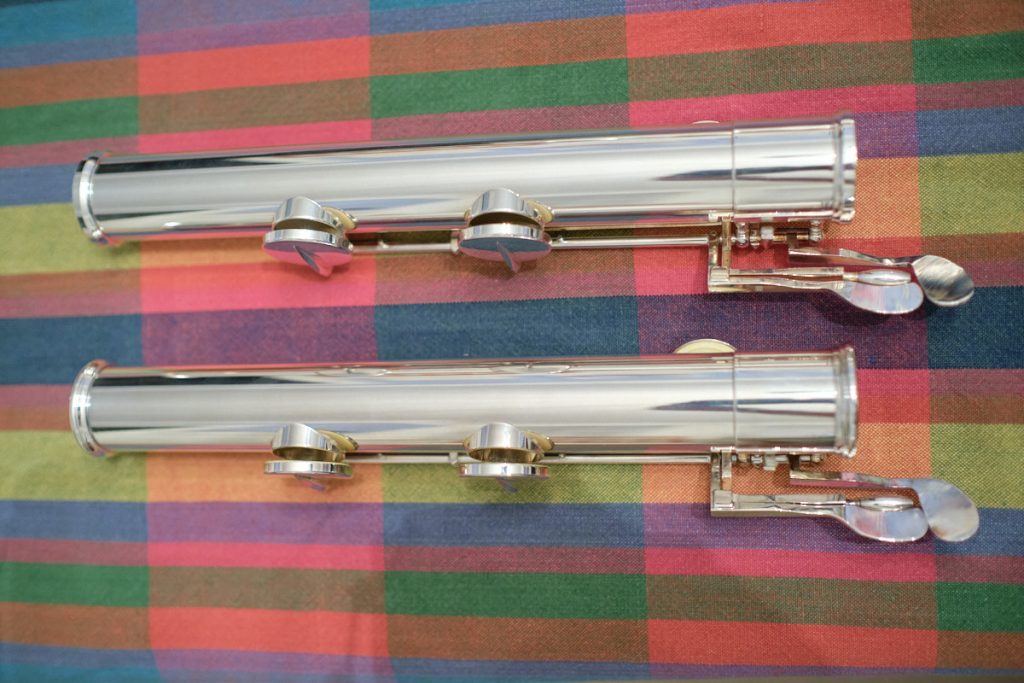
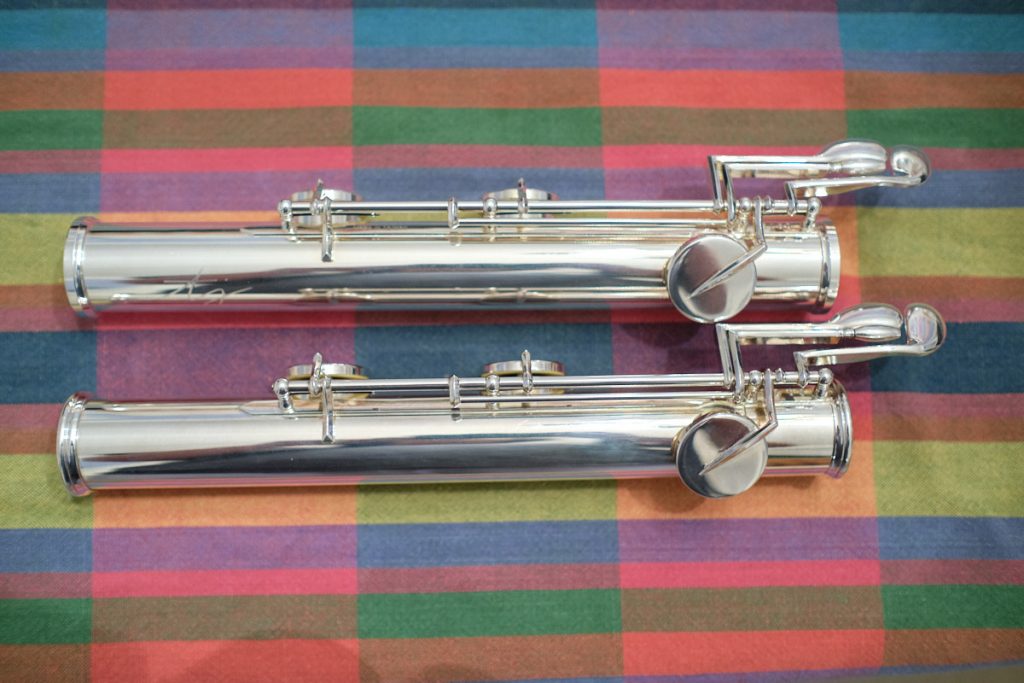
You can tell the Pearl flute ($3,999 with a B foot, there is a C-foot model that is less expensive) is a bit different from the Trevor James and Gemeinhardt even before you open the case. The look is much more square and industrial, especially once you open the case. There’s no velvet, but instead more utilitarian egg crate foam. The case does come with a lock and key.
The flute itself is also different from the Trevor James and Gemeinhardt in some significant ways. The Pearl flute bend has a noticeably wider diameter. It also has a larger lip plate and embouchure hole. I had been told that the wider bend allowed for better weight distribution (with more weight on the left side of the flute), but I did not find that to be the case. However, I was comparing a B-foot Pearl to other C-foot flutes, so I couldn’t do a direct apples-to-apples comparison (I wanted to try a C-foot Pearl but couldn’t find one immediately available to trial). Overall, I found that the Pearl wasn’t all that comfortable to play. I found the metal hand crutch to be so uncomfortable that I had to wrap a sock around my hand for added cushioning (this lead me to invent the “bass flute glove” — more on that below). The crutch attaches to the flute by screwing into a cylinder lined with a plastic sleeve. On the flute I tested, the plastic sleeve had come loose and kept coming out when the crutch was removed. I also found the right pinky key to be quite a stretch for my smallish hands.
When I picked up the Pearl I had a hard time playing the lowest notes, and had difficulty with the D, E, and F in both the first and second octave. However, the highest register sounded full and fabulous (my 16-hear-old flute-playing daughter picked it up and just wanted to play all the high notes repeatedly). After trying different head joint positions I was able to eventually get all the octaves to sound good, but any minor change in head joint position threw everything out of wack. I suspect the larger embouchure hole just doesn’t work as well for me as the smaller hole. Perhaps it is something I would get used to with practice. When I played the Pearl for Wendy and Sarah they noticed how much I had to fiddle with it and commented that it had a less resonant sound than the others when I played it. It is possible that the particular Pearl I played had a problem, and the difficulty I had with D, E, and F suggests maybe a leaky key on the right hand. The Pearl didn’t work well for me, but it seems to have many fans.
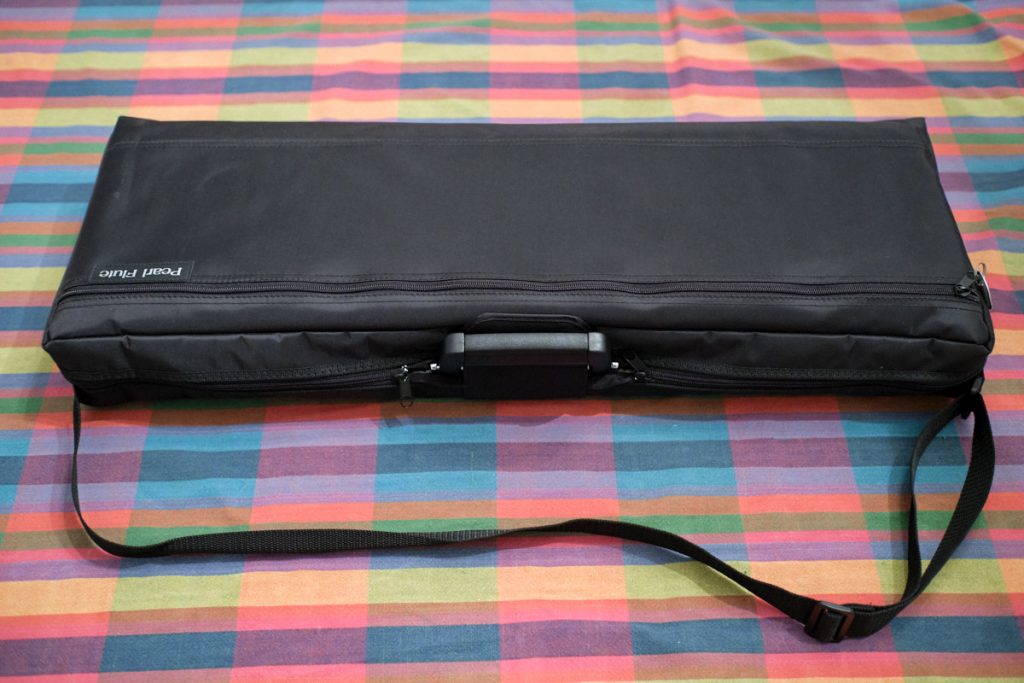
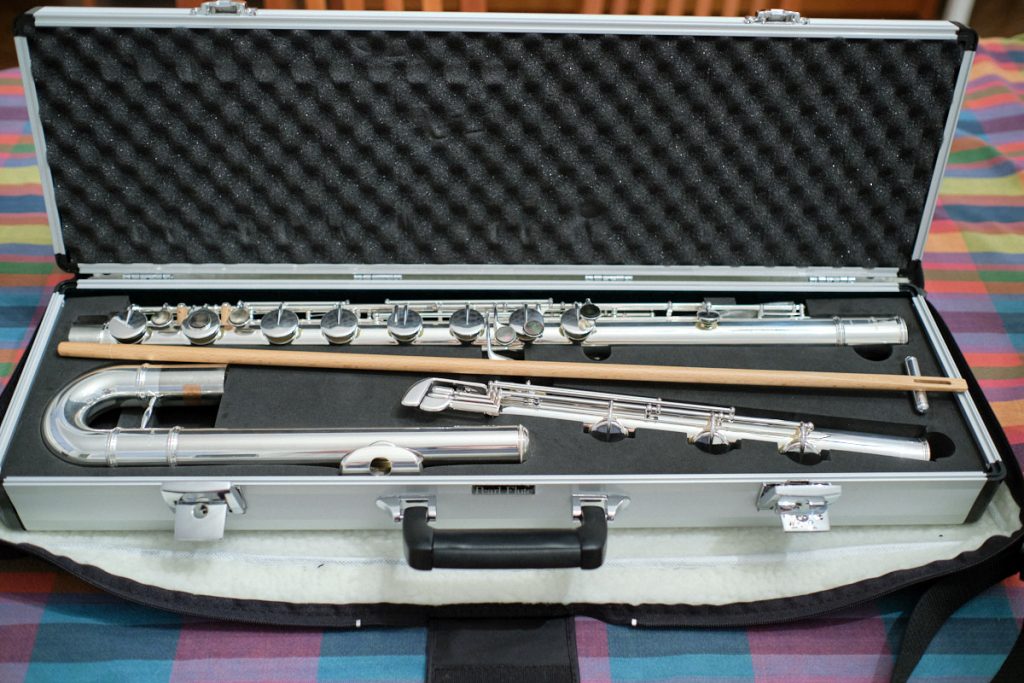
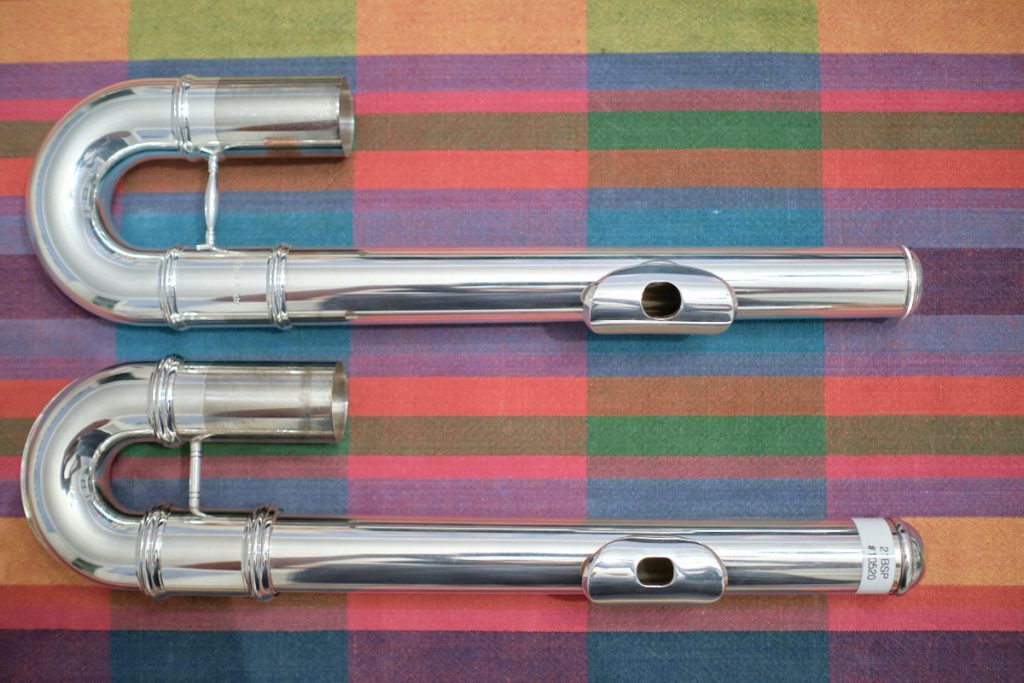
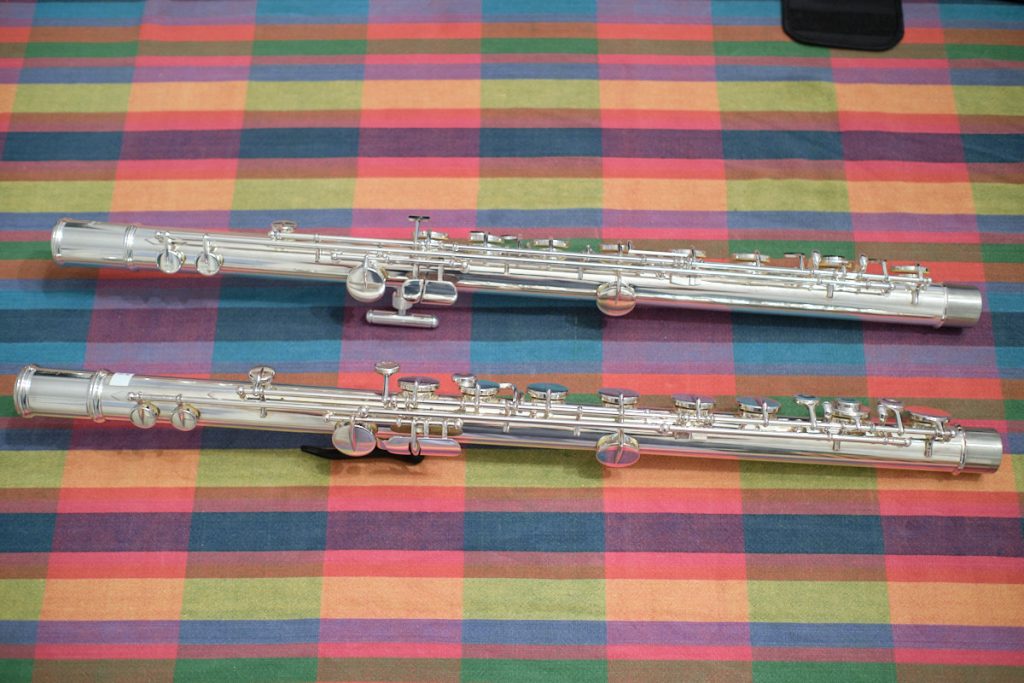
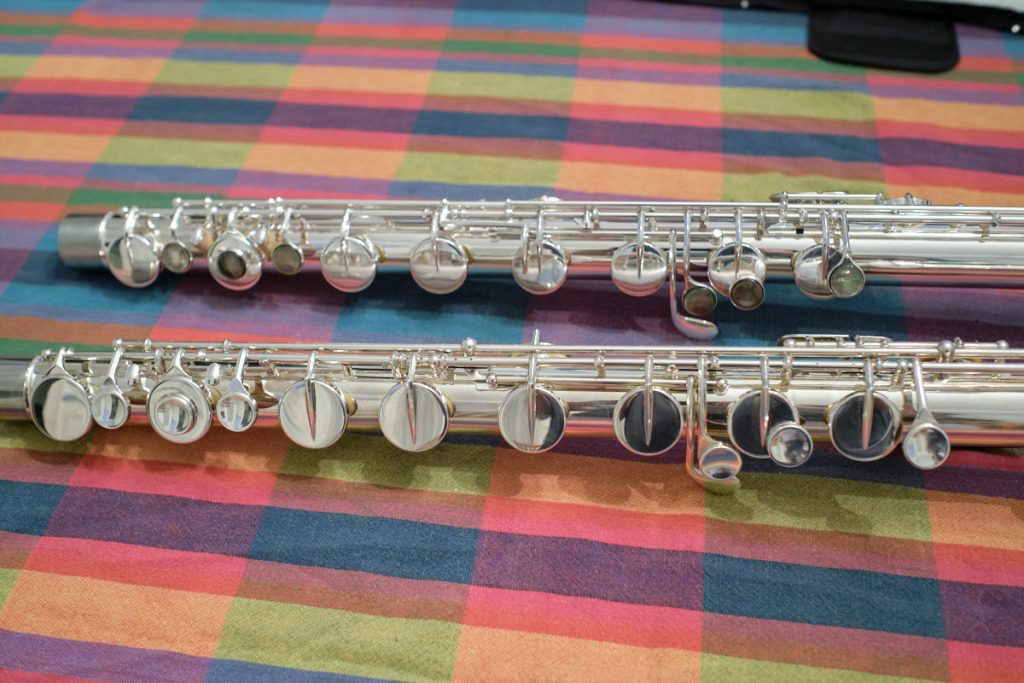
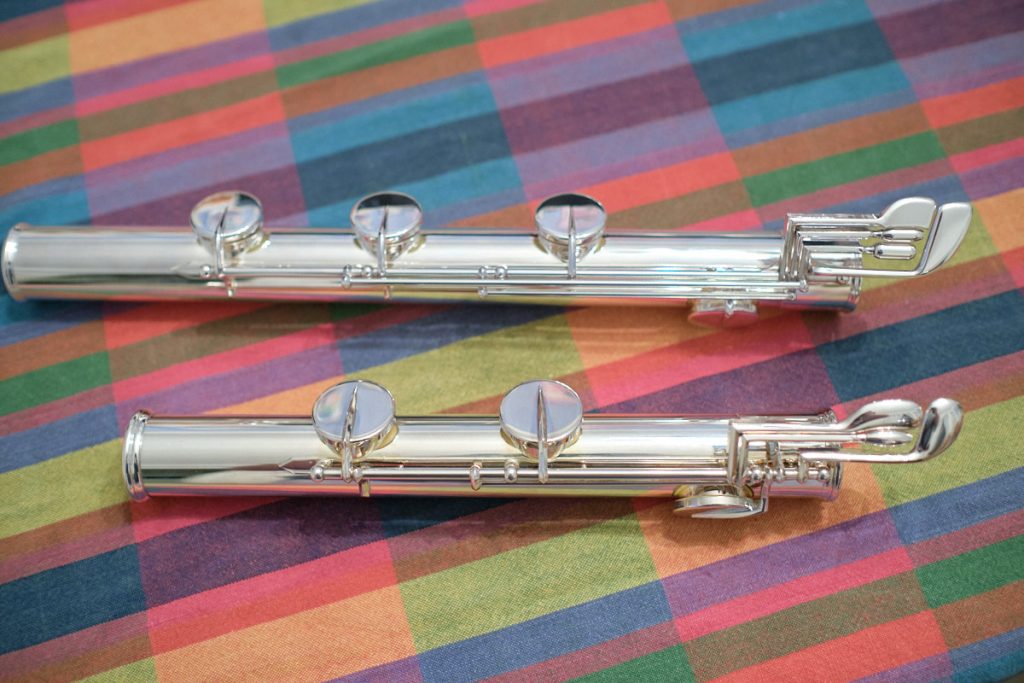

To add more cushioning where the hand crutch rests between my left thumb and first finger, I sewed a bass flute glove out of a piece of fabric cut from a soft old t-shirt that had a bit of stretch to it. It is just a rectangle of t-shirt fabric sewn into a tube with a slit for the thumb and a cushion made from layers of cotton/polyester quilt batting. The photo below shows the second one I made, with six layers of padding and a tighter fit than the first one. I may try some more variations, but this general concept seems to effectively cushion the weight of the flute on my left hand without restricting finger and thumb movement.
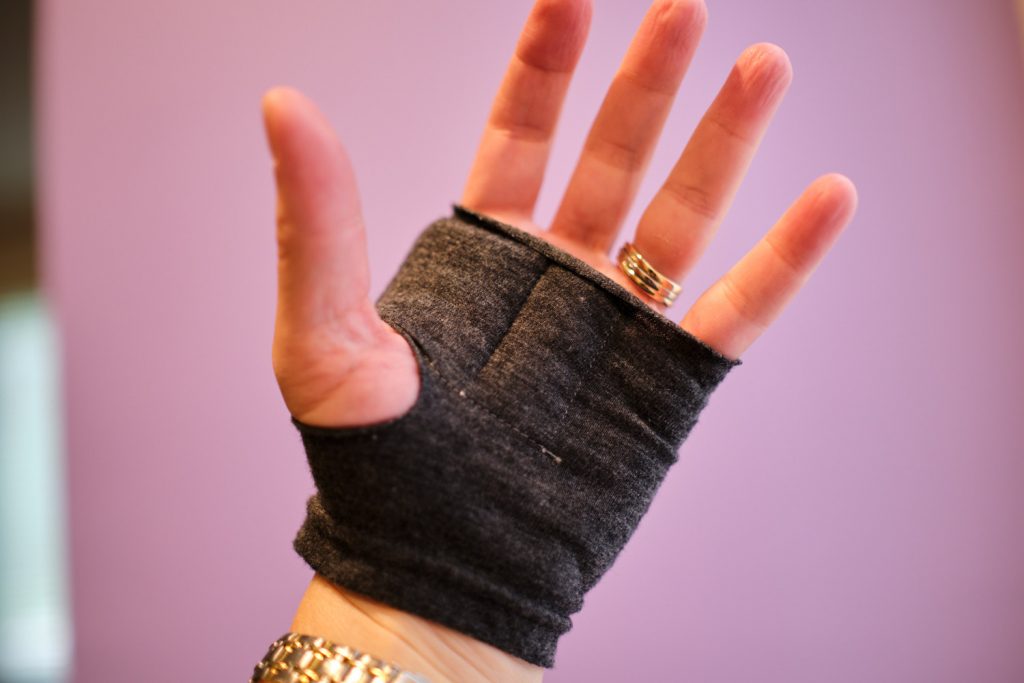
I found the Flute Pro Shop horizontal flute ($2,878) to be somewhat similar to the Pearl flute, with the wider bend and large lip plate and embouchure hole. Like the Pearl, I found this flute somewhat hard to play and had to fiddle with the headjoint position quite a bit to get a good sound. I found some of the notes a bit easier to play than the Pearl, but it did not have the Pearl’s strong upper register.
This flute is somewhat of a budget version of the Pearl — no inlaid keys and no fancy details. The flute looks a little rougher around the edges than the Pearl — some of the weld joins are not as smooth as you might like and there are some odd angular connections with thin metal strips. The hand crutch is the same shape as the Pearl, but made of wood and I found it just as uncomfortable as the Pearl. The case is an all-in-one case (rather than a separate case and cover).
On the plus side, the Flute Pro Shop horizontal bass has a nice wide left first-finger key and I didn’t have any problem reaching the right pinky key. It does not have a B flat roller.
Overall, this is a solid bass flute for the price, and if you like the Pearl but want something less expensive, this one may be worth checking out. But this style of bass flute doesn’t seem to work well for me.
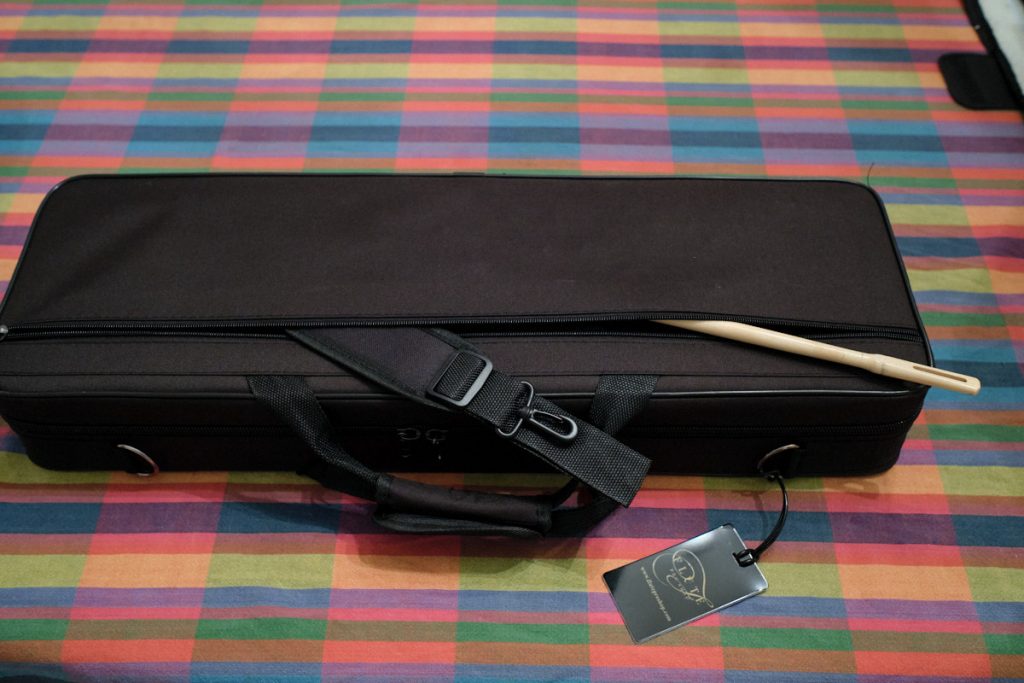
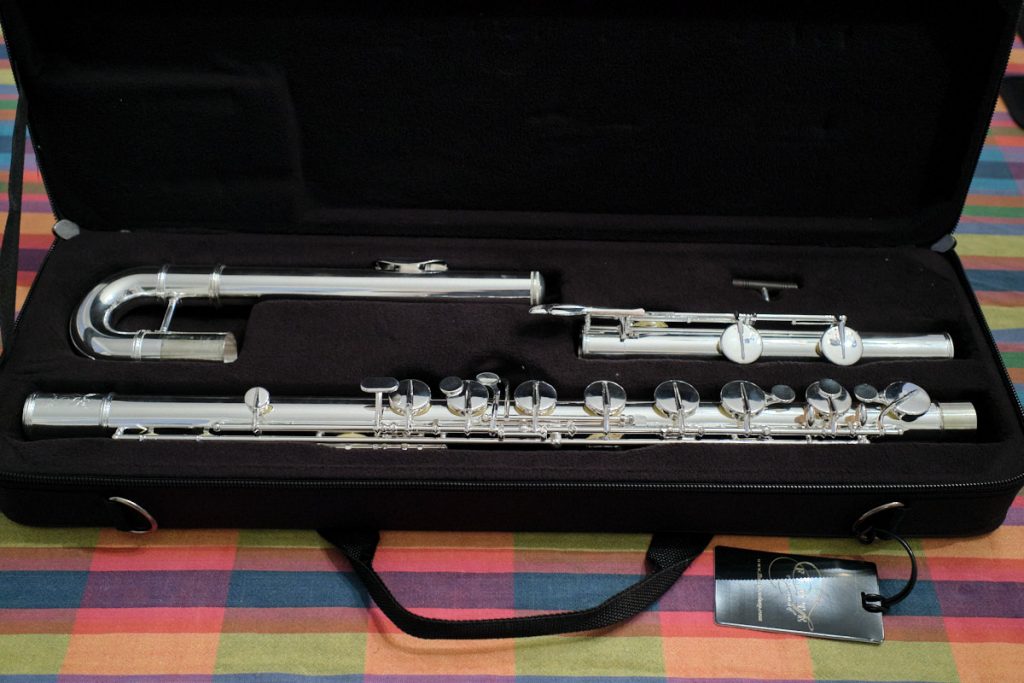

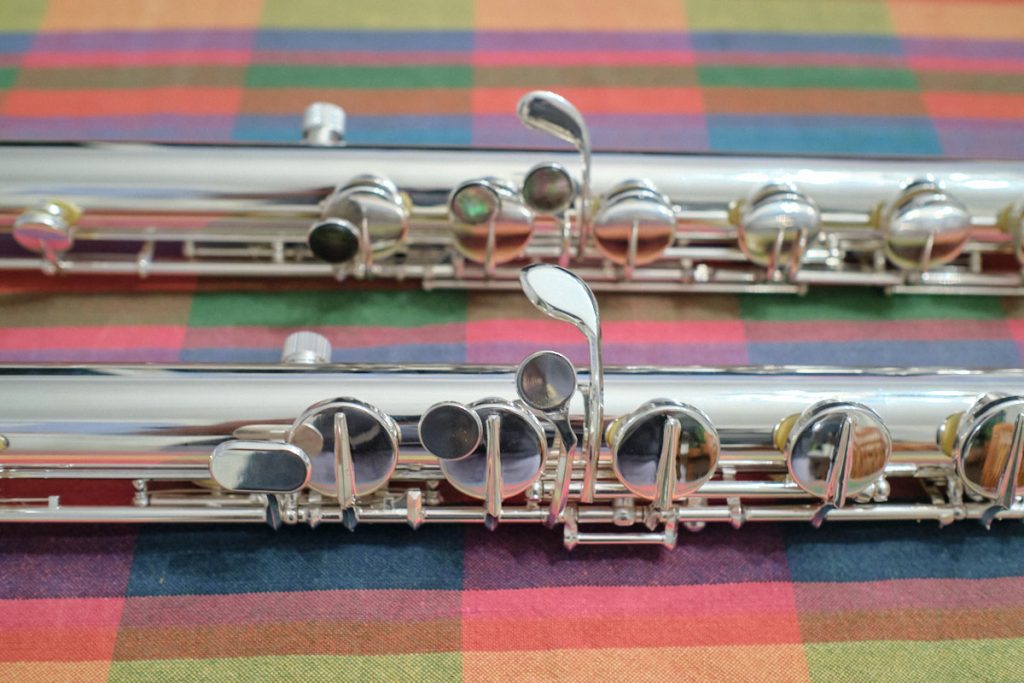
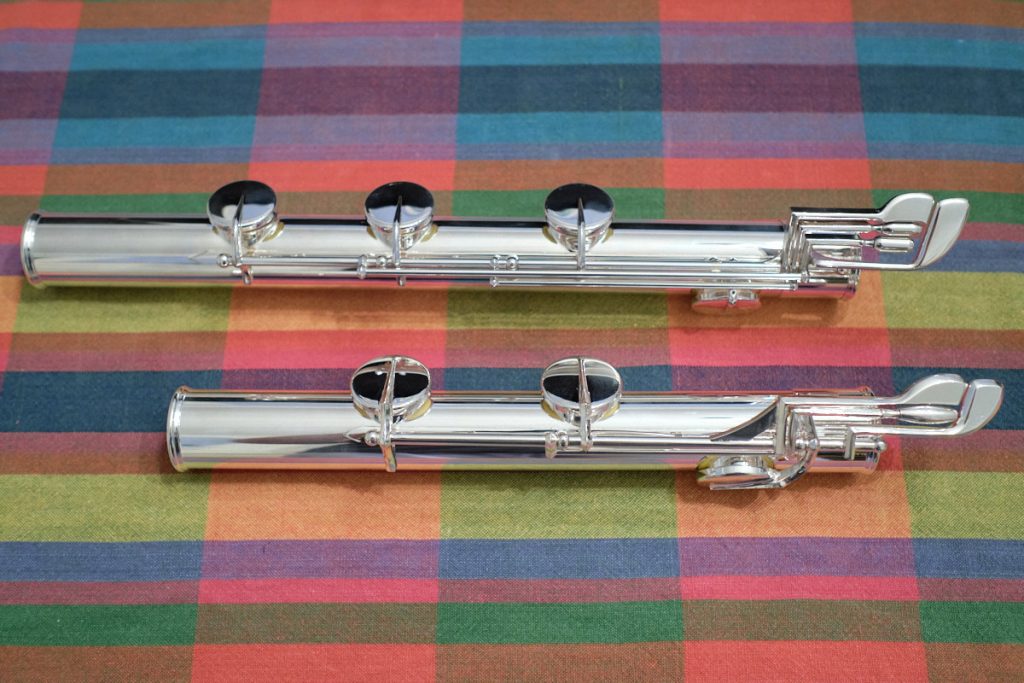
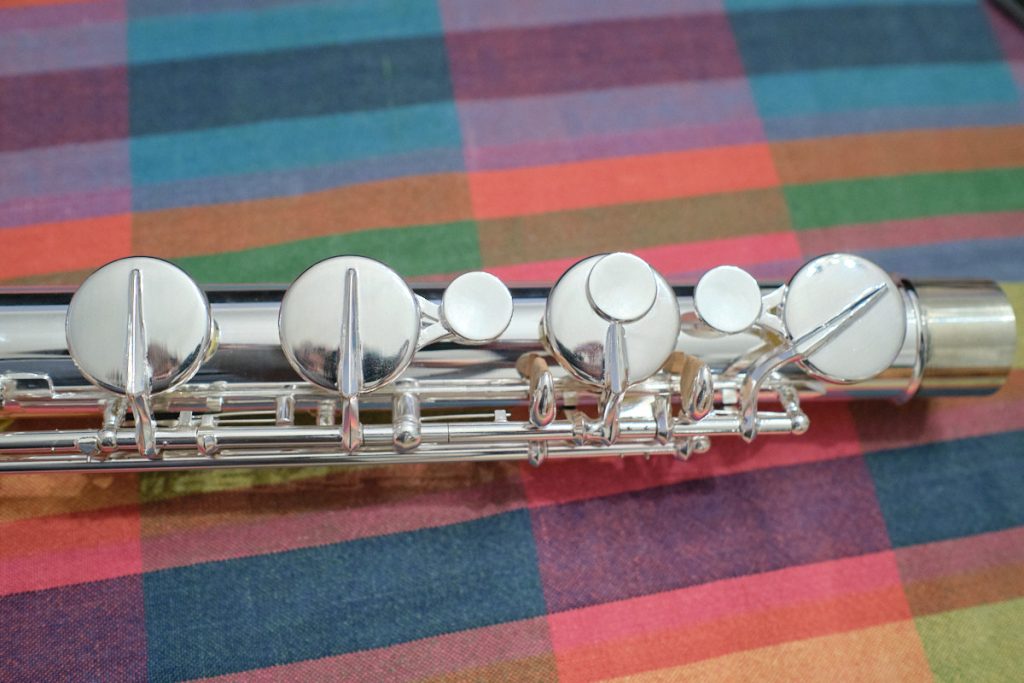

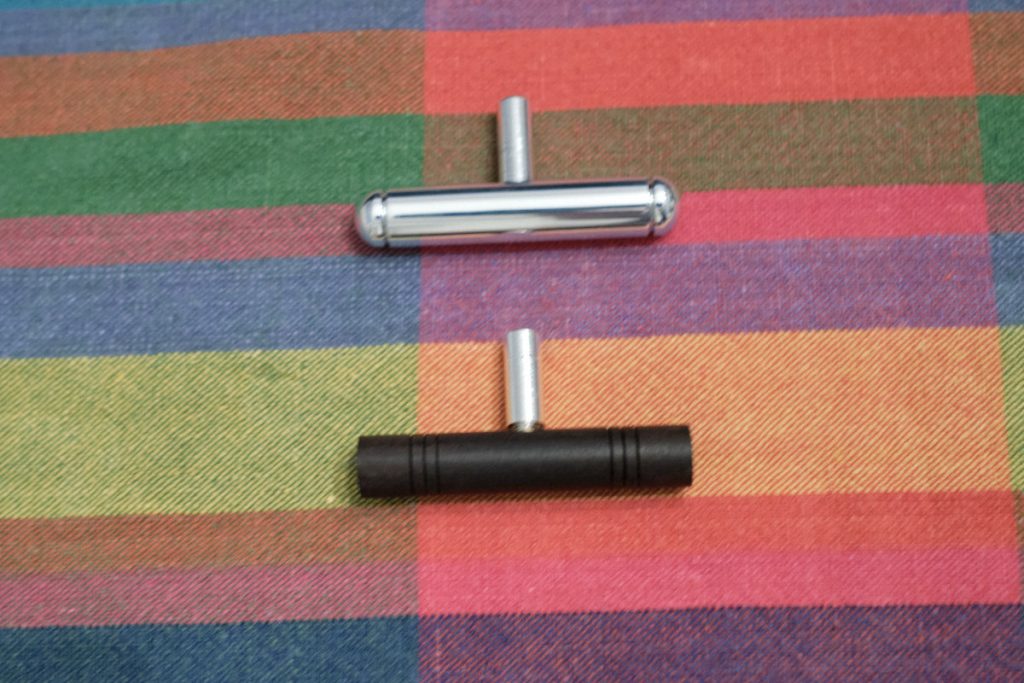
The most unique bass flute I trialed was the Flute Pro Shop vertical bass flute ($4,288) — slightly above my budget but it was listed on sale on the website for $3,998 and I really wanted to try a vertical flute. There aren’t very many vertical bass flutes available, and this was the only one I could find that fit within my budget. I was eager to try a vertical bass flute, as it seemed like it would be much less tiring to play. I also play saxophone (again as an amateur), so I’m comfortable with the vertical hand positioning.
The Flute Pro Shop vertical bass comes in a pretty hefty all-in-one case. It’s well padded but has no pockets. The bass comes with a very long peg that you screw into the flute. You can adjust it to play either sitting or standing. I’m 5’2″ and when I played it standing there was still a lot more peg left to let out, so I suspect even someone about 5’10” tall could probably play it standing up, but taller than that you might need to put a block under the peg to play while standing.
Like the Flute Pro Shop horizontal bass, the vertical bass has a large lip plate and embouchure hole. However, it doesn’t have the wide bend in the head joint. It comes with a B foot, but I didn’t have a problem reaching the right pinky key on this one. It has a nicely-placed left first-finger key that is easy to reach. The right-hand first and ring-finger keys are attached to their respective key covers as with the horizontal bass, but they are closer together and don’t have the strange-looking brackets. It is also a basic, low frills style — a little rough around the edges, but only if you look closely.
I put the vertical bass together and had to figure out how to adjust it. A horizontal bass flute can be adjusted in 2 dimensions — the angle of the entire head joint as well as the angle of just the mouth piece. The vertical bass flute has more variables — how far in front and how far to the side you place the peg on the floor. I had the best sound when I kept the peg fairly close to me so the flute was more vertical. However, I also found that when I put my chin up to the mouthpieces, the whole head joint acted like a lever, causing the flute to rotate. I tried to brace the flute with my hands to stop the rotation, but found this fairly difficult. I could barely lean my right thumb against the bottom hand rest and the top hand rest was way to far away for my hand to reach. I tried attaching my tenor sax neck strap, but it didn’t really help. I also tried playing with only the neck strap and not the peg. The flute still rotated and I found myself trying to play it like a saxophone, with side keys that it doesn’t actually have. Eventually, I was able to get the head joint adjusted and everything balanced on the peg just so, minimizing the rotation and getting a pretty good sound. But it was still fairly difficult and required a bit of fiddling every time I picked it up. When I played for Sarah and Wendy they also noted that I was holding my wrists at an awkward angle. We concluded that the vertical flute was probably too big for me.
I still think the vertical bass is a really nice concept, and if it fits you well could be a great instrument that puts a lot less strain on your hands (no need for a bass flute glove), arms, and shoulder than a horizontal bass. I imagine it might also be easier to play in a flute choir without knocking into the person or music stand to your right. Vertical bass flutes are significantly more expensive than their horizontal cousins, but if you have trouble with the weight of a horizontal bass it could be worth the extra cost. Since the end of the flute is aimed directly at the floor I was concerned about how well it would project. However, I thought this one projected just fine (for a a bass flute… they are generally quiet instruments). Standing and holding the flute felt really good and practically effortless, but it was not effortless to play. This flute just didn’t fit me well and was actually harder for me to play than some of the horizontal flutes. Maybe with more practice I would have gotten used to it and found workarounds. Since this is the only vertical bass I tried, I don’t know if the problems I had with this one are unique to this instrument.
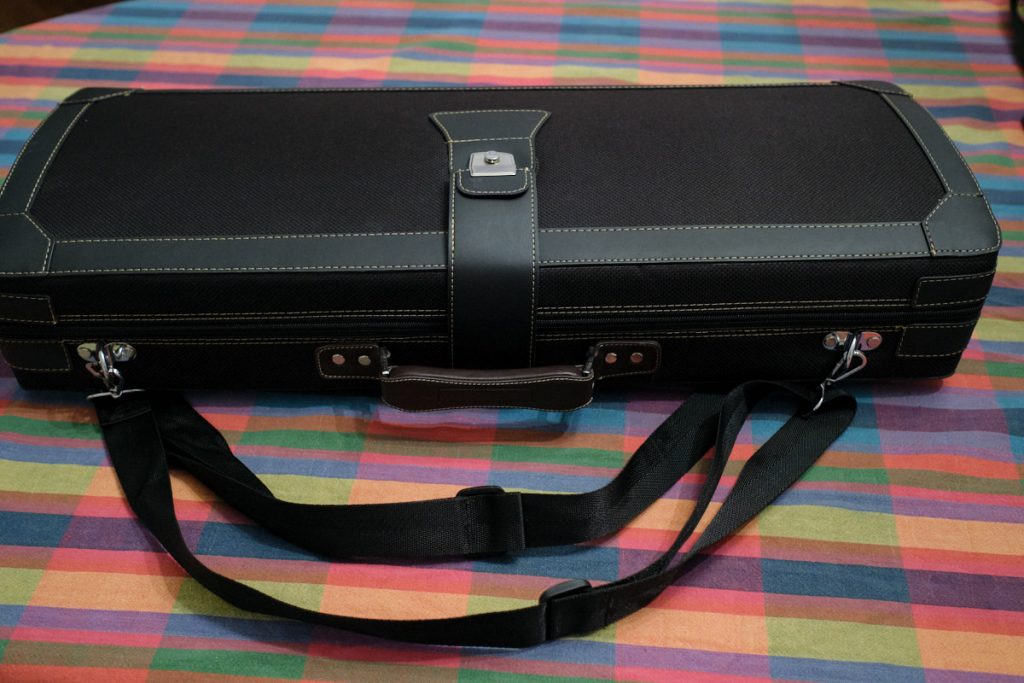
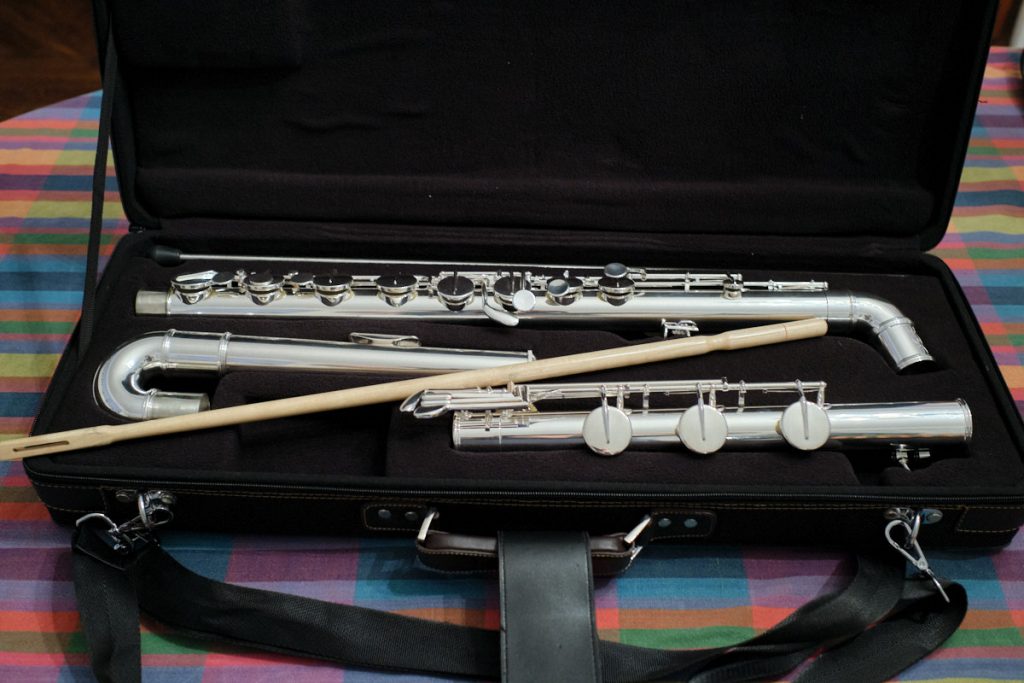

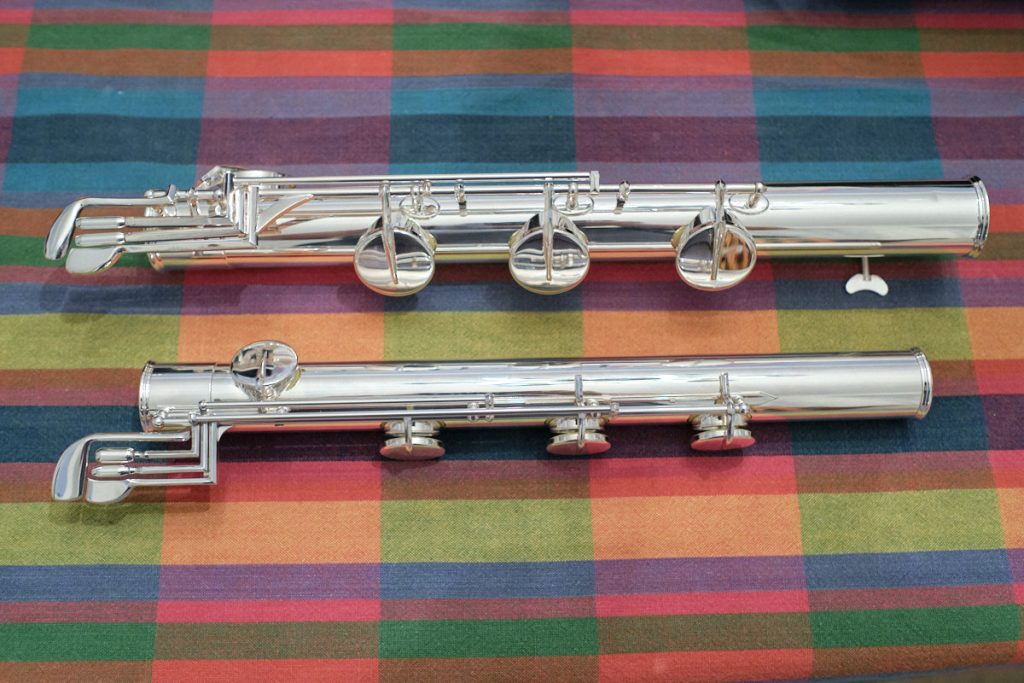
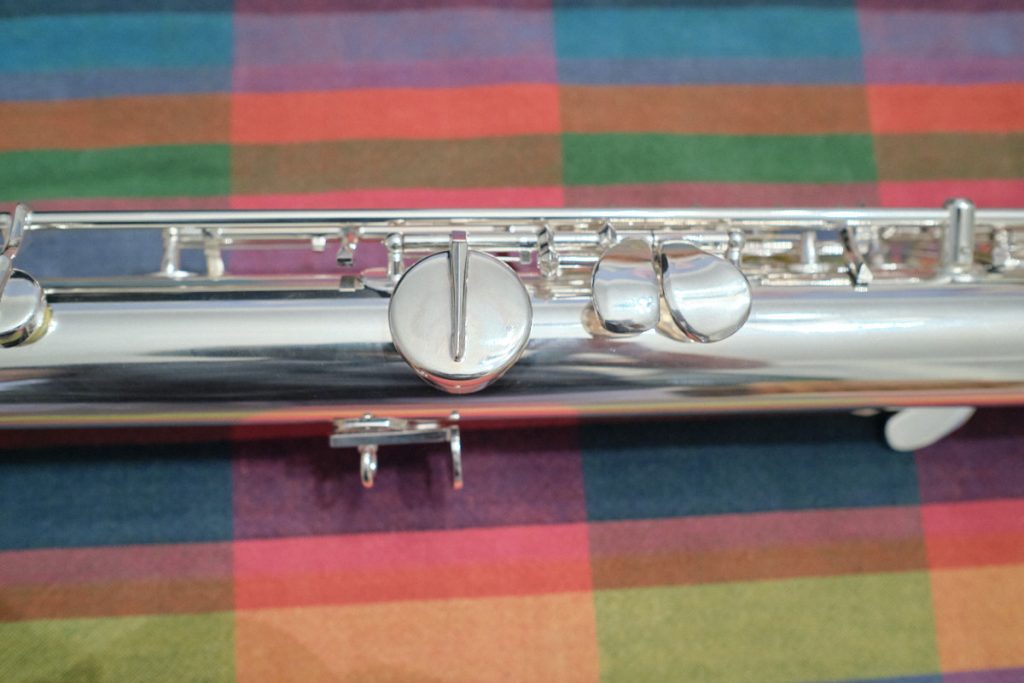
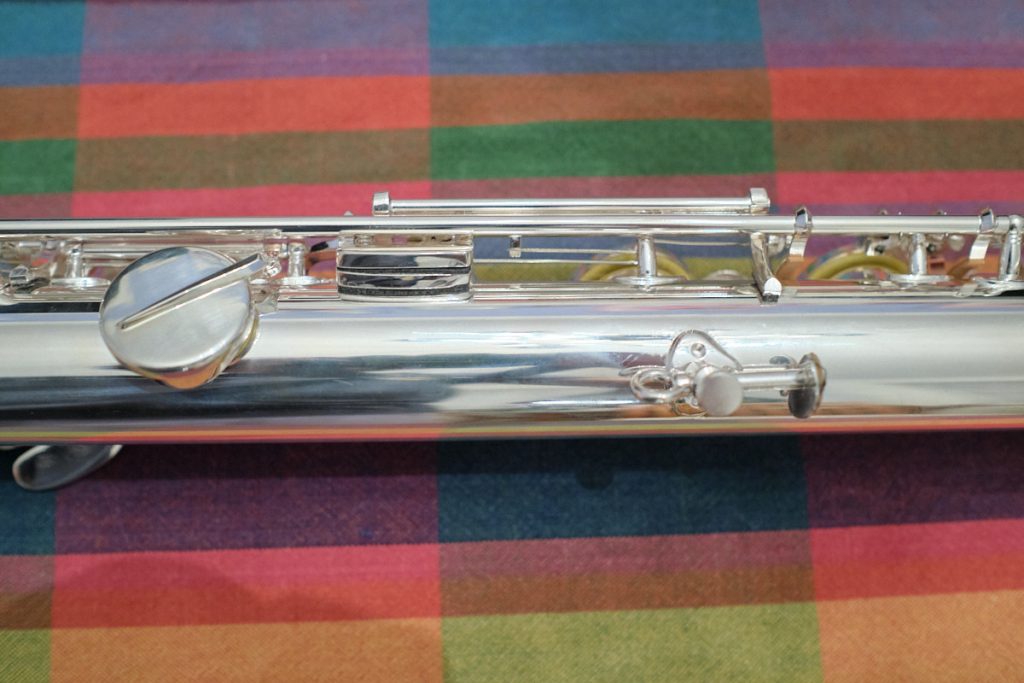
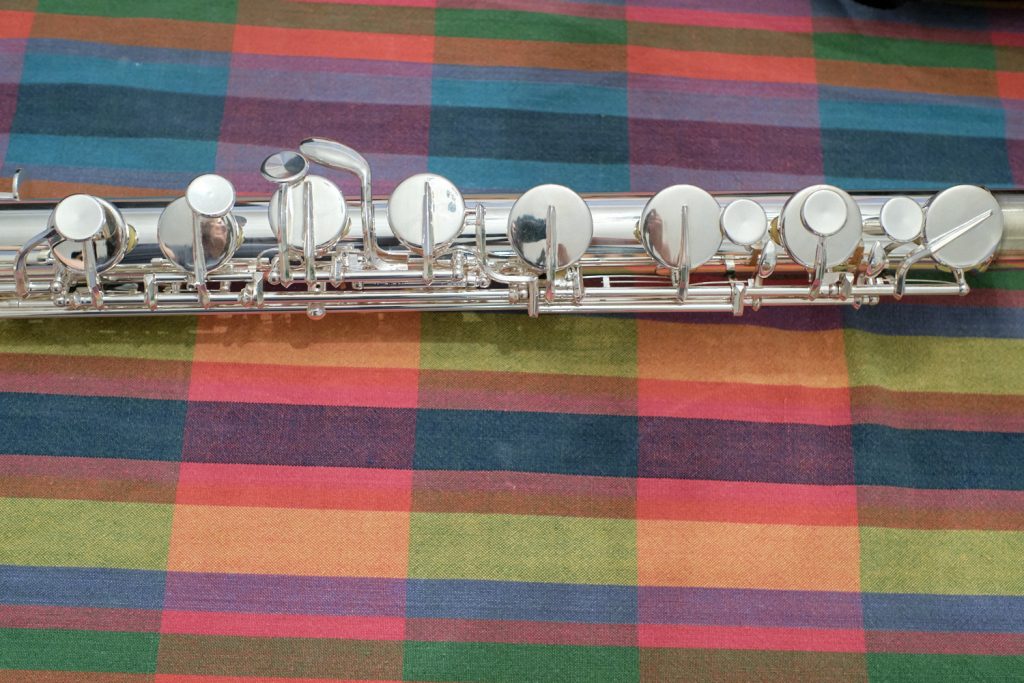
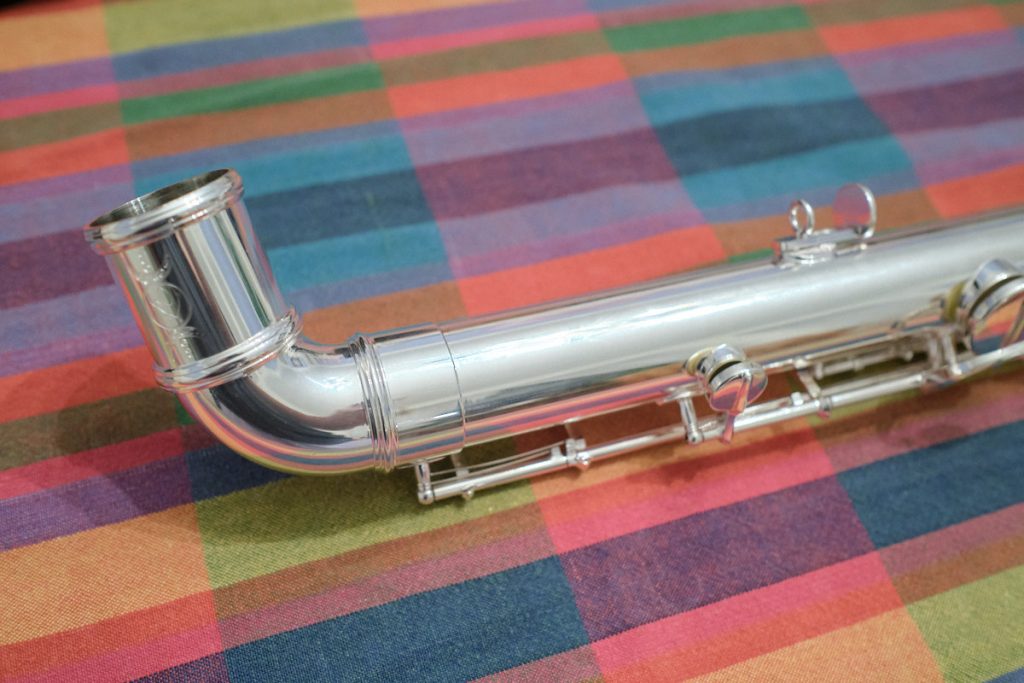
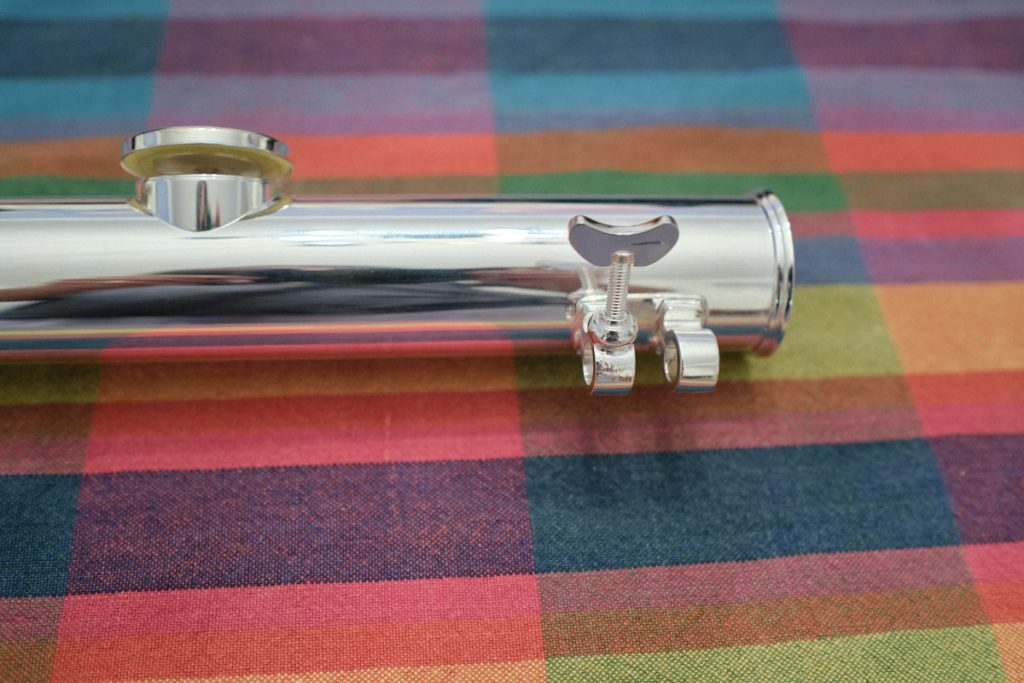
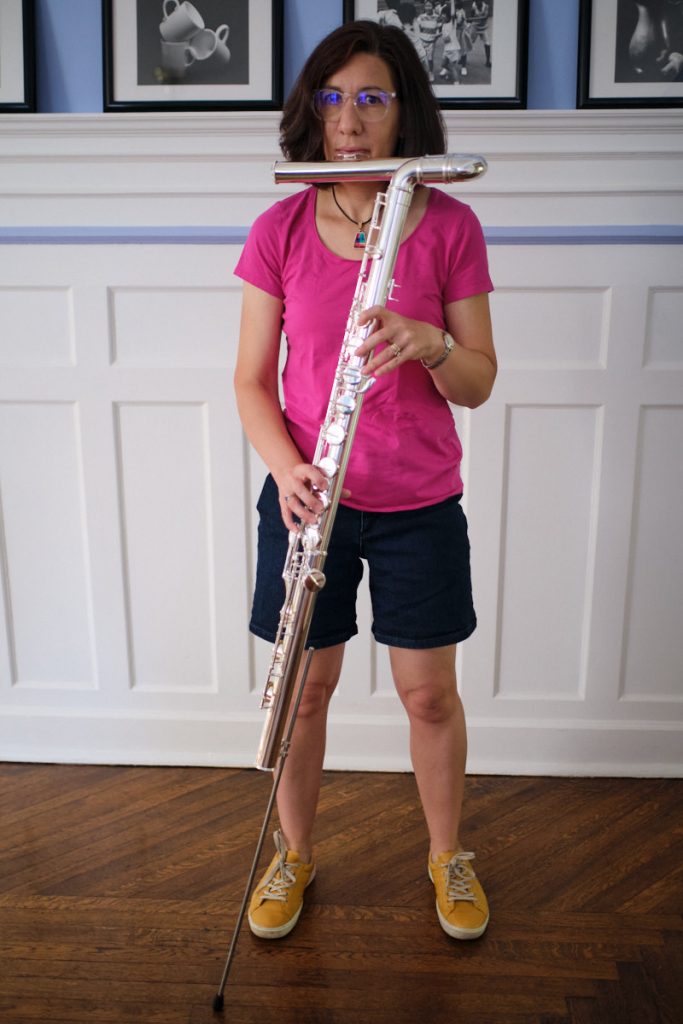
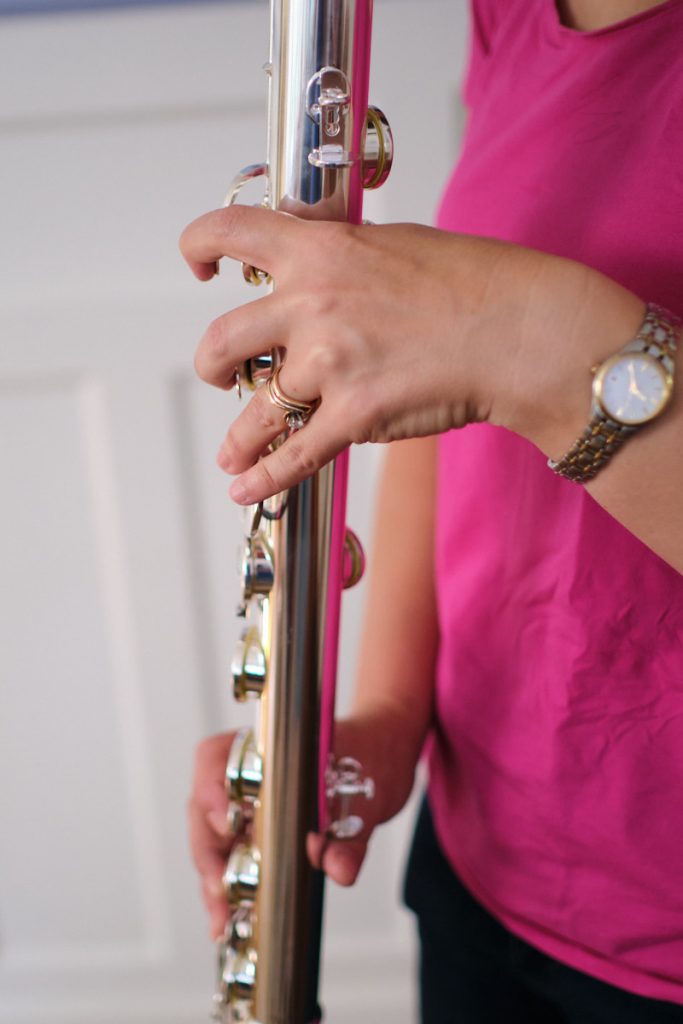



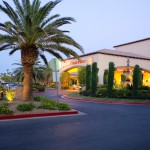
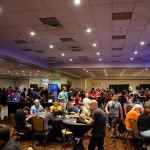
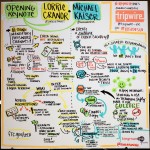

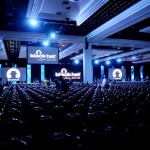


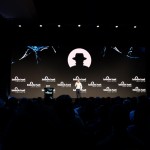


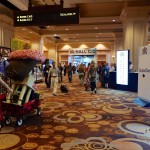


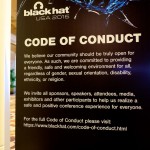
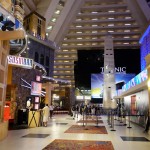



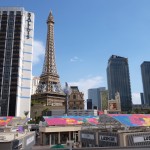

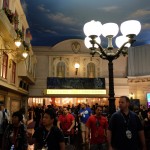
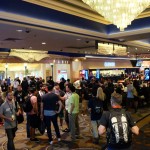
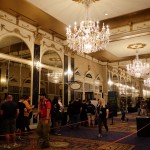
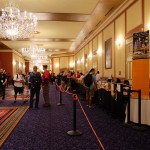
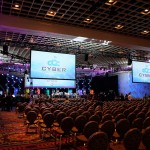
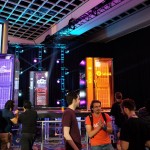

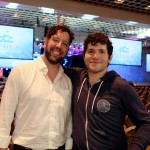
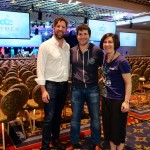
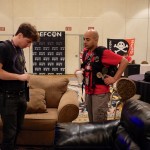
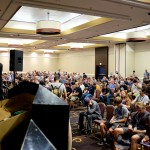
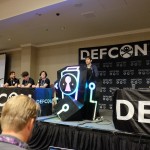
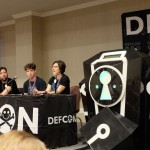
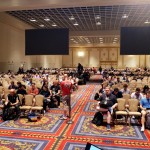
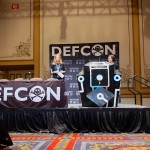

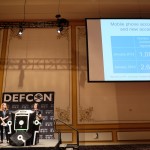
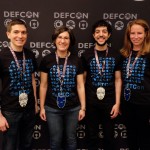
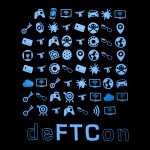
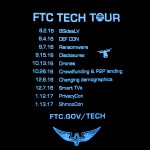
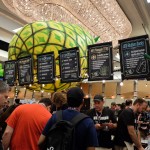
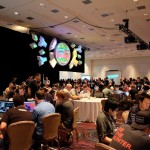
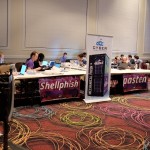
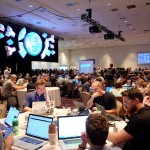
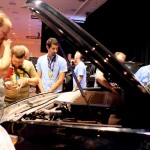
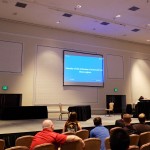
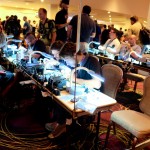

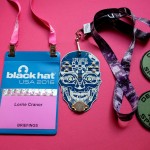
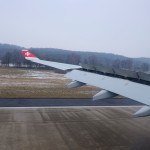

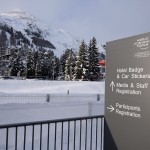
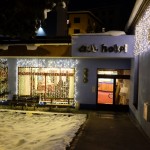
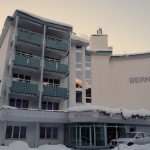
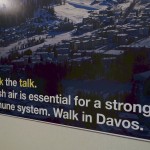

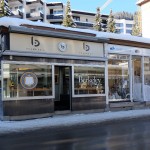
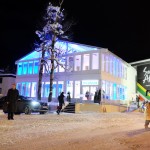


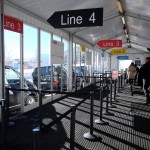
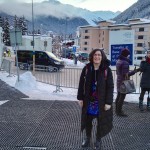
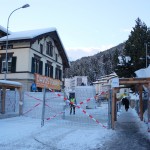
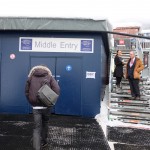
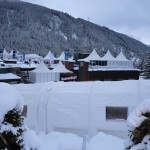
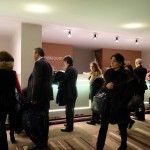
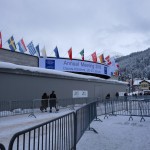

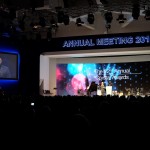
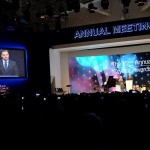
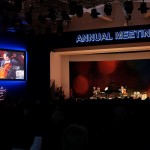
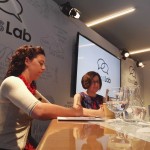
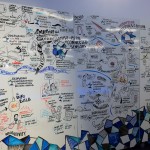


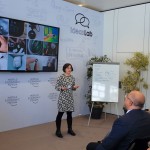

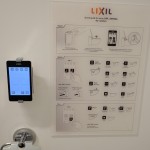



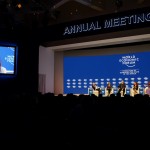
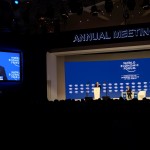
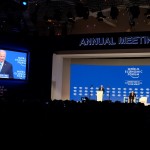

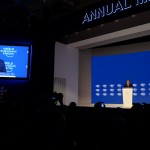
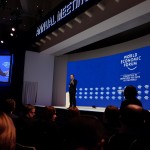
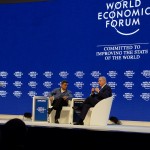

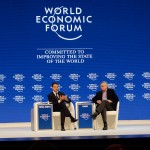
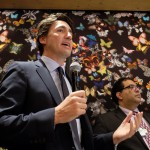
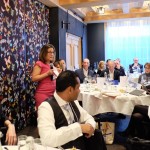
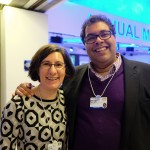

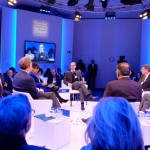

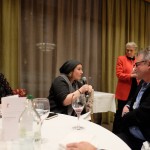
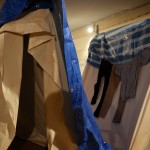
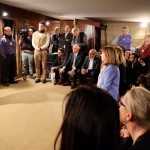
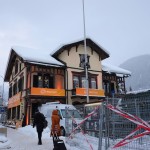
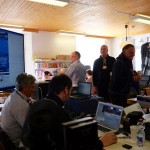
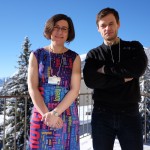


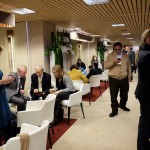
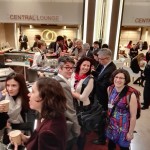
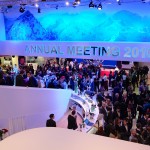
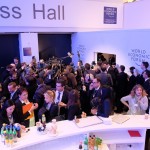
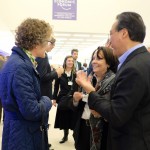

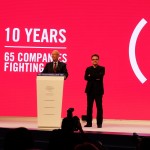

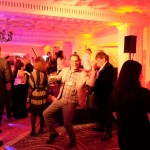
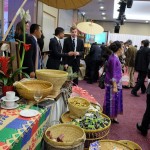
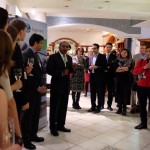


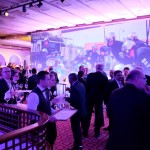

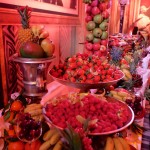
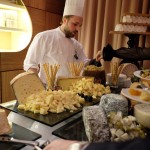
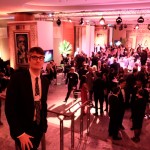
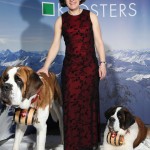
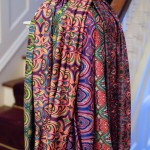













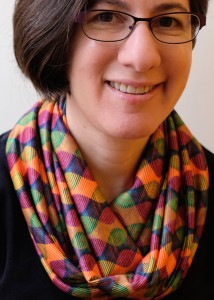
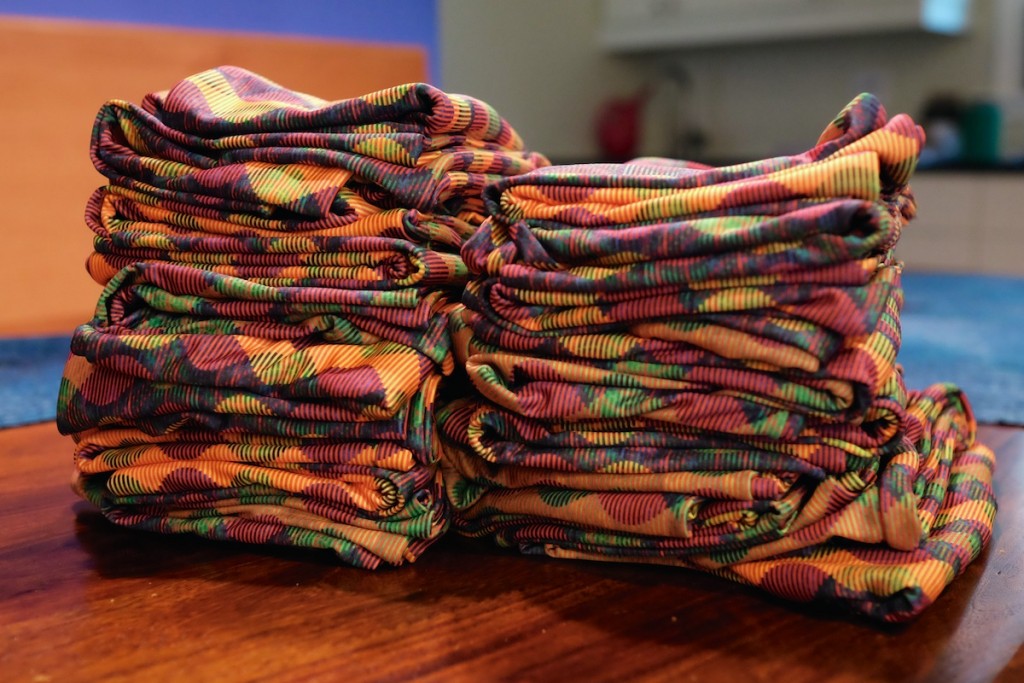
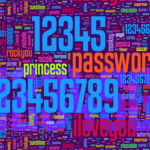
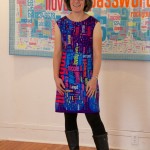
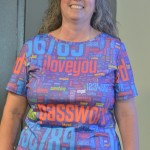
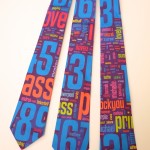
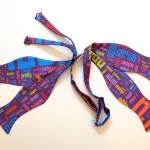
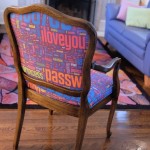

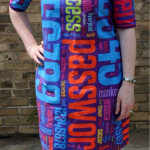
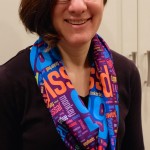

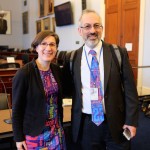

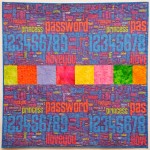
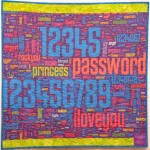
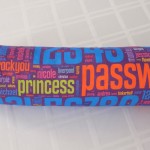
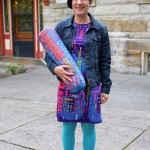
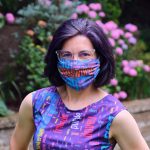

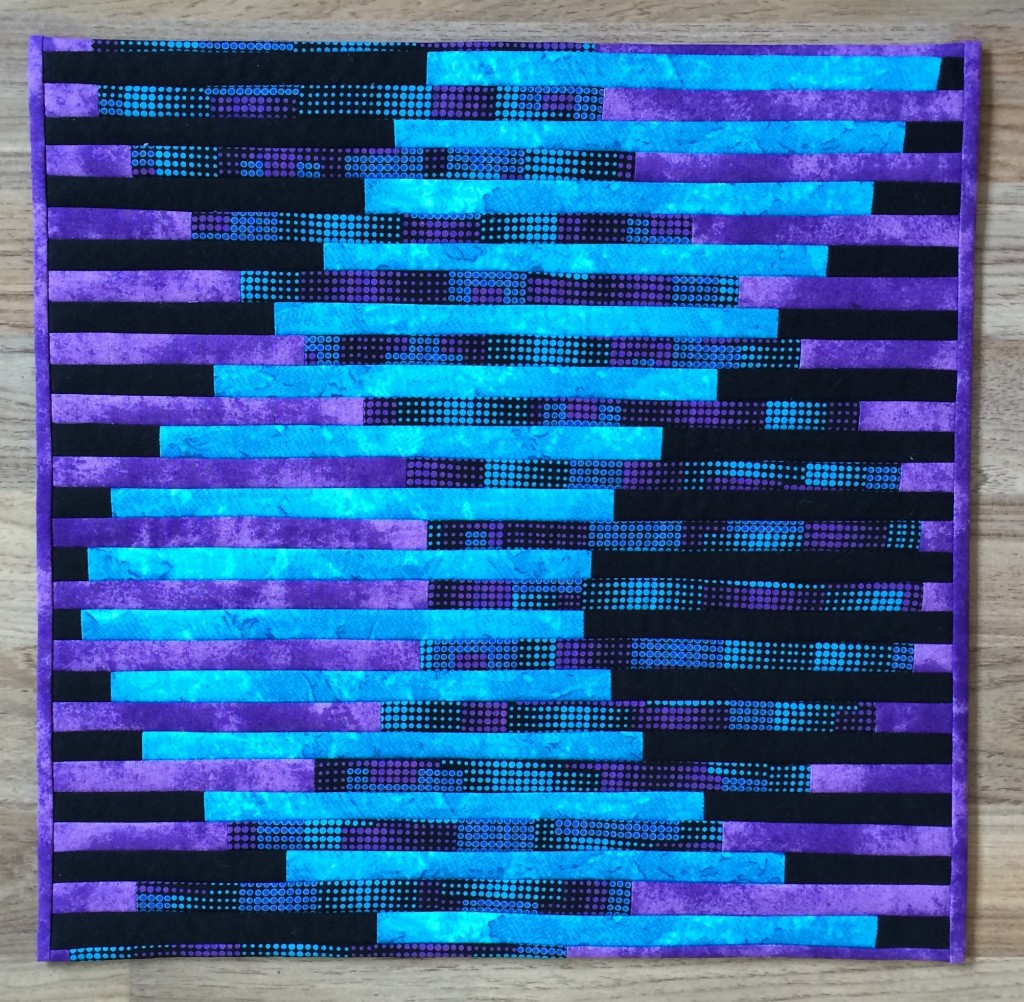

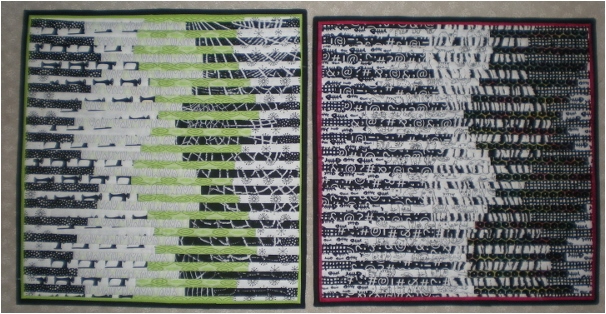


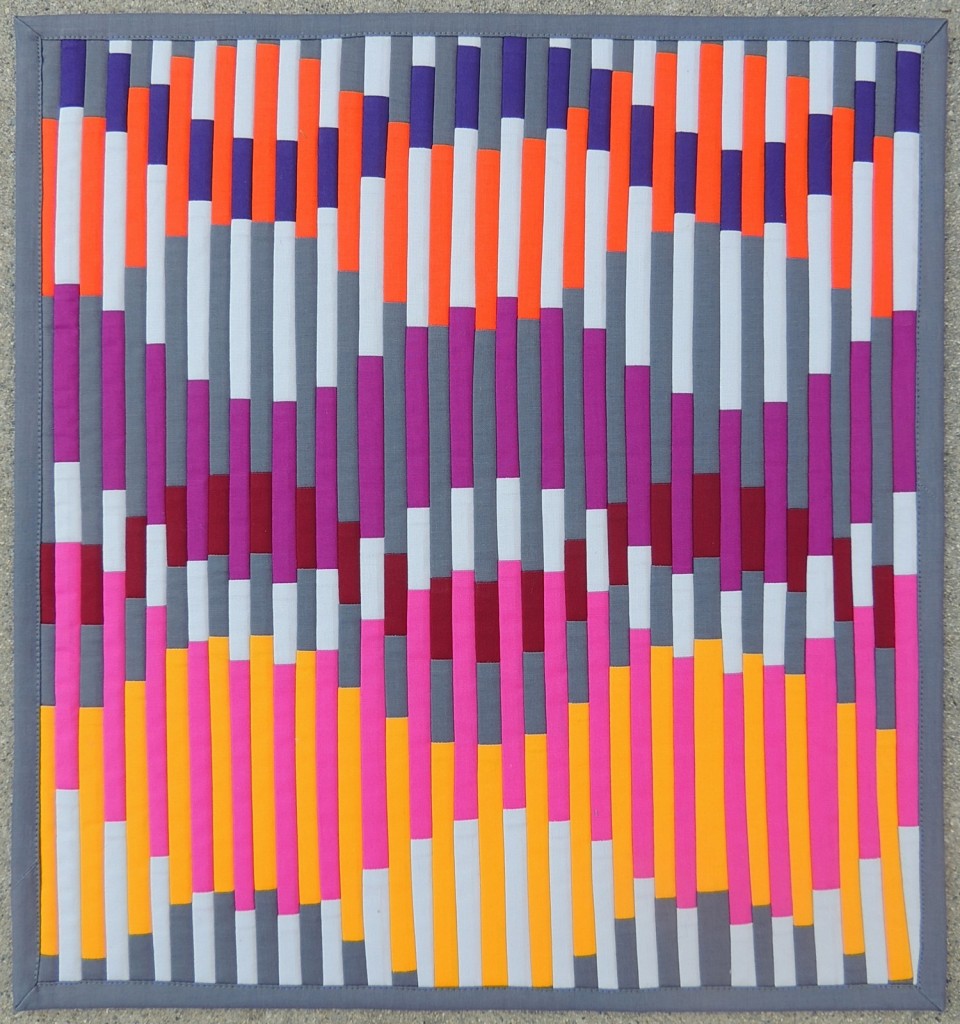
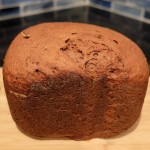
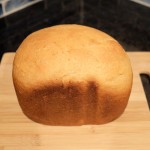

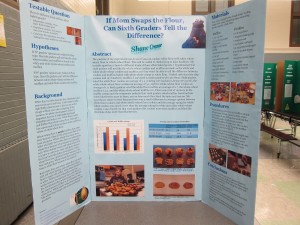
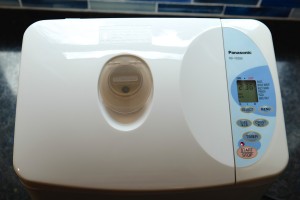
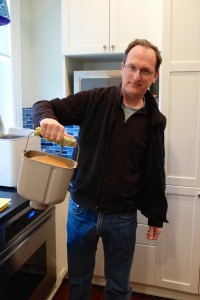
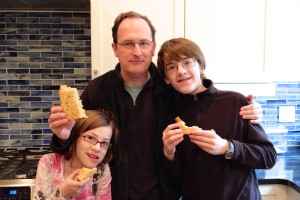
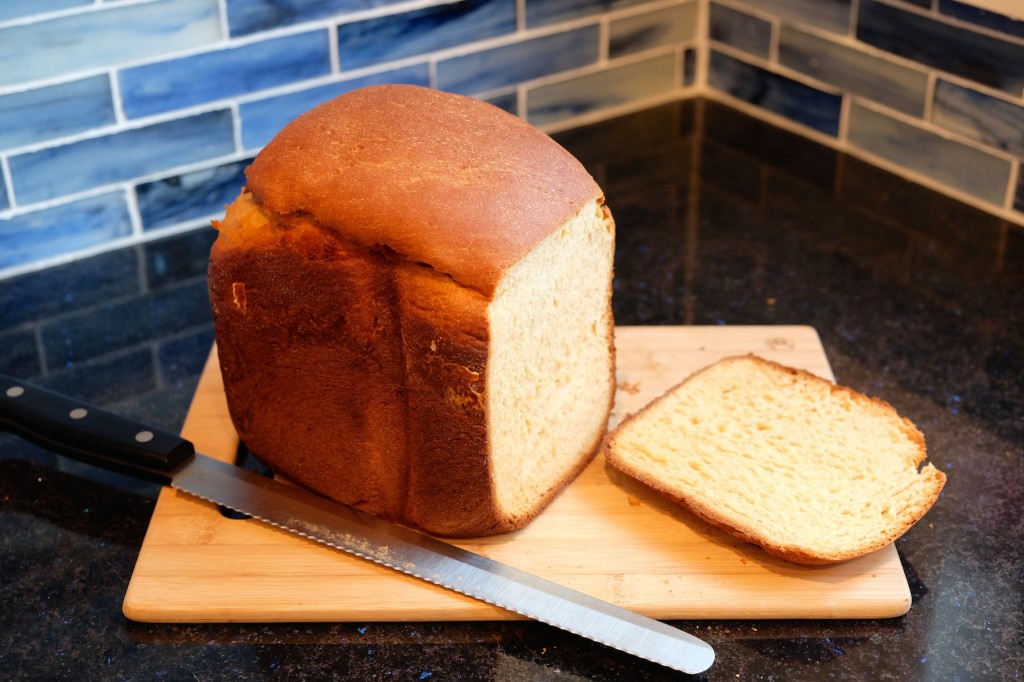
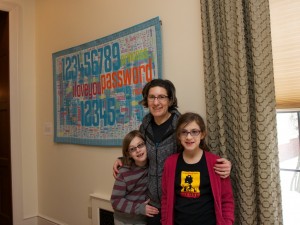
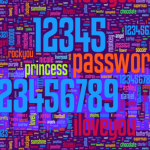

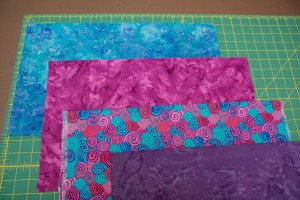
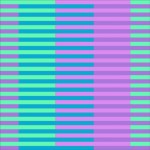
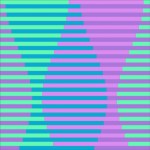 In the instructions below I used a vase shape (shown here on the left) to shift my interleave design, but there are lots of other designs you might choose.
In the instructions below I used a vase shape (shown here on the left) to shift my interleave design, but there are lots of other designs you might choose.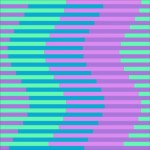
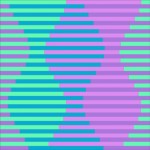
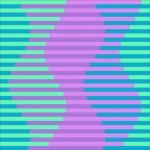
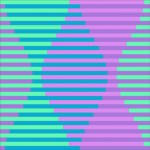
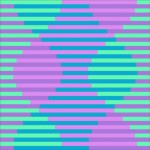

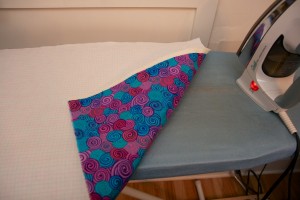
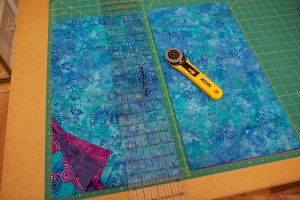
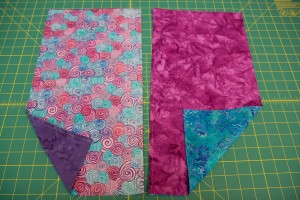
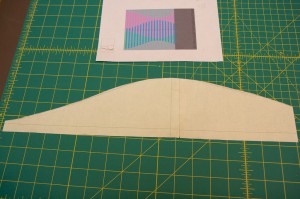
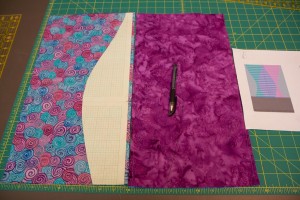
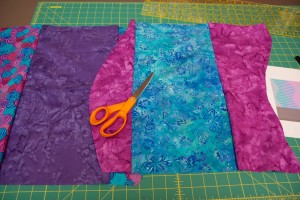
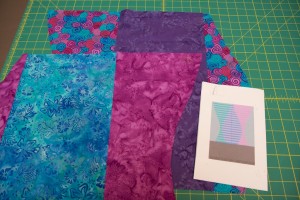
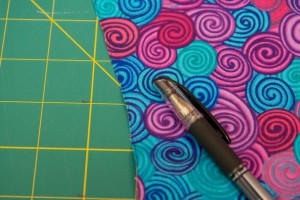
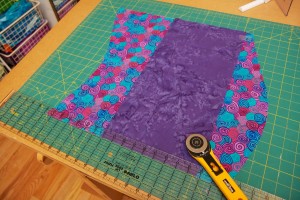
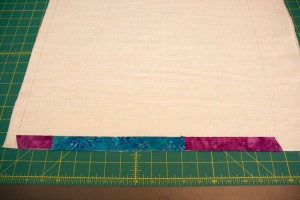
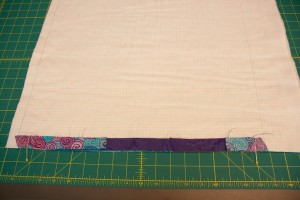
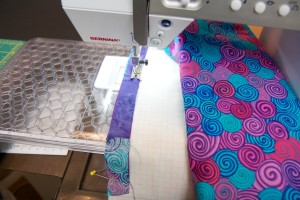
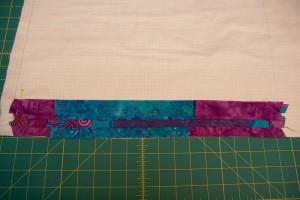
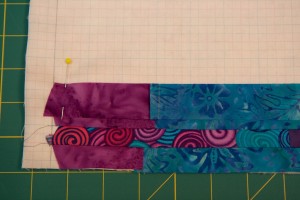
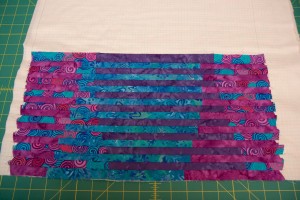
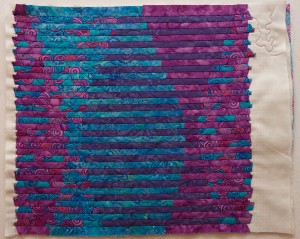
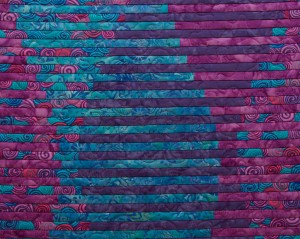
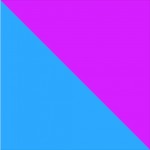





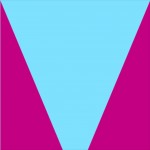

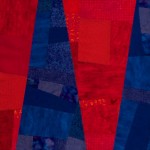
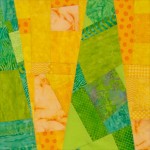
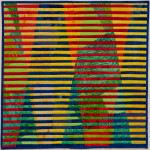
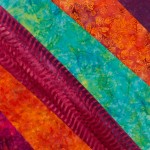
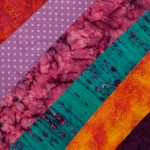
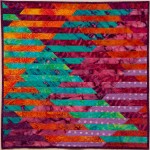
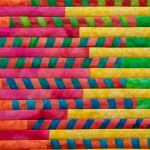

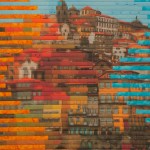
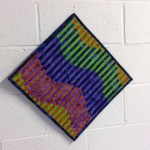
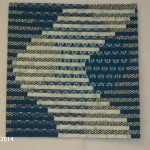
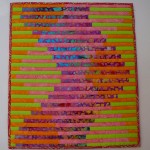
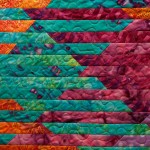

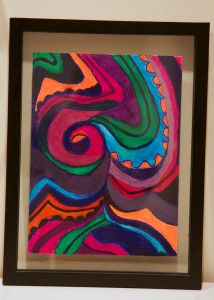

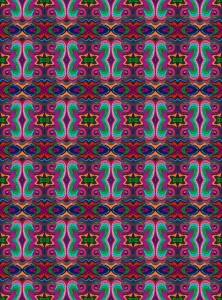
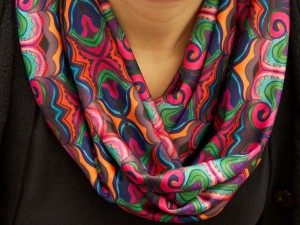
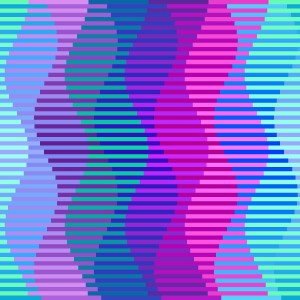
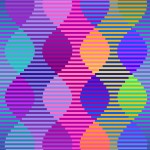
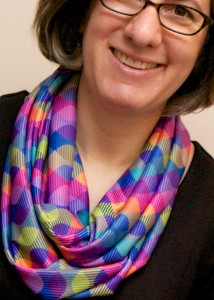


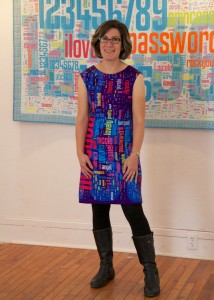
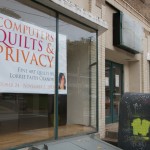
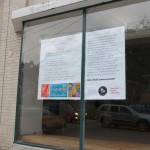
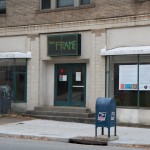

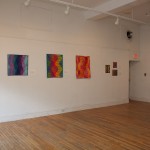
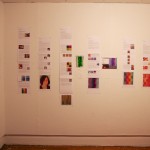


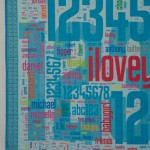 I asked my students to extract the 1000 most popular passwords from the RockYou data set and provide a list to me with frequency counts. I then went through the list and sorted them into a number of thematic groups. I assigned a color to each group and entered the passwords with weights and colors into the
I asked my students to extract the 1000 most popular passwords from the RockYou data set and provide a list to me with frequency counts. I then went through the list and sorted them into a number of thematic groups. I assigned a color to each group and entered the passwords with weights and colors into the 